Inglês
Exibindo questões de 201 a 300.
Na declaração de Greta Garbo “I was in love with him - FAMERP 2021
Inglês - 2021Leia os textos para responder às questões de 11 a 17.
Female historical figures who were happy with their choices

In the 1932 film “Grand Hotel,” Garbo’s character famously proclaimed, “I want to be alone,” a quote that was affiliated with her for the rest of her life. She did have several relationships, including a long on-and-off with her frequent co-star John Gilbert. He once proposed to her, but she said no. “I was in love with him, but I froze,” she later told New York magazine. “I was afraid he would tell me what to do and boss me. I always wanted to be the boss.”

The iconic designer had many, many love affairs and several significant relationships, but she never married. She was once quoted as saying, “I never wanted to weigh more heavily on a man than a bird.” Less great: the evidence that she worked as a Nazi spy during the Second World War.

Cassatt had a lot of familial love, as she’s maybe best known for her paintings that clearly but unsentimentally depicted the bonds between parents and children. But that love came from her relationships with her nieces and nephews, as she chose not to marry and didn’t have kids herself. The Impressionist painter enjoyed the freedoms that feminism had given women of her privileged stature by the turn of the 20th century — among them the right to an independent life. She was highly educated and well-travelled, and spoke out about the importance of female suffrage.
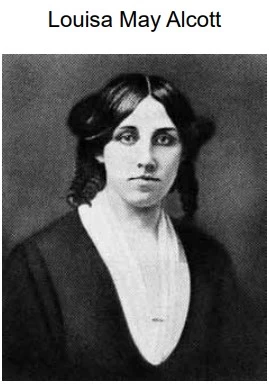
Like Jo in her best-known book “Little Women,” Alcott was independent and concerned with advancing women’s place in the world. But unlike Jo, she never married. “I’d rather be a free spinster and paddle my own canoe,” she wrote in her journal.
(Maija Kappler. www.huffingtonpost.ca, 28.02.2020. Adaptado.)
O trecho sobre Coco Chanel “She was once quoted as - FAMERP 2021
Inglês - 2021Leia os textos para responder às questões de 11 a 17.
Female historical figures who were happy with their choices

In the 1932 film “Grand Hotel,” Garbo’s character famously proclaimed, “I want to be alone,” a quote that was affiliated with her for the rest of her life. She did have several relationships, including a long on-and-off with her frequent co-star John Gilbert. He once proposed to her, but she said no. “I was in love with him, but I froze,” she later told New York magazine. “I was afraid he would tell me what to do and boss me. I always wanted to be the boss.”

The iconic designer had many, many love affairs and several significant relationships, but she never married. She was once quoted as saying, “I never wanted to weigh more heavily on a man than a bird.” Less great: the evidence that she worked as a Nazi spy during the Second World War.

Cassatt had a lot of familial love, as she’s maybe best known for her paintings that clearly but unsentimentally depicted the bonds between parents and children. But that love came from her relationships with her nieces and nephews, as she chose not to marry and didn’t have kids herself. The Impressionist painter enjoyed the freedoms that feminism had given women of her privileged stature by the turn of the 20th century — among them the right to an independent life. She was highly educated and well-travelled, and spoke out about the importance of female suffrage.

Like Jo in her best-known book “Little Women,” Alcott was independent and concerned with advancing women’s place in the world. But unlike Jo, she never married. “I’d rather be a free spinster and paddle my own canoe,” she wrote in her journal.
(Maija Kappler. www.huffingtonpost.ca, 28.02.2020. Adaptado.)
De acordo com o texto sobre Coco Chanel, a) a estilista - FAMERP 2021
Inglês - 2021Leia os textos para responder às questões de 11 a 17.
Female historical figures who were happy with their choices

In the 1932 film “Grand Hotel,” Garbo’s character famously proclaimed, “I want to be alone,” a quote that was affiliated with her for the rest of her life. She did have several relationships, including a long on-and-off with her frequent co-star John Gilbert. He once proposed to her, but she said no. “I was in love with him, but I froze,” she later told New York magazine. “I was afraid he would tell me what to do and boss me. I always wanted to be the boss.”

The iconic designer had many, many love affairs and several significant relationships, but she never married. She was once quoted as saying, “I never wanted to weigh more heavily on a man than a bird.” Less great: the evidence that she worked as a Nazi spy during the Second World War.

Cassatt had a lot of familial love, as she’s maybe best known for her paintings that clearly but unsentimentally depicted the bonds between parents and children. But that love came from her relationships with her nieces and nephews, as she chose not to marry and didn’t have kids herself. The Impressionist painter enjoyed the freedoms that feminism had given women of her privileged stature by the turn of the 20th century — among them the right to an independent life. She was highly educated and well-travelled, and spoke out about the importance of female suffrage.

Like Jo in her best-known book “Little Women,” Alcott was independent and concerned with advancing women’s place in the world. But unlike Jo, she never married. “I’d rather be a free spinster and paddle my own canoe,” she wrote in her journal.
(Maija Kappler. www.huffingtonpost.ca, 28.02.2020. Adaptado.)
No trecho do texto sobre Mary Cassatt “among them the - FAMERP 2021
Inglês - 2021Leia os textos para responder às questões de 11 a 17.
Female historical figures who were happy with their choices

In the 1932 film “Grand Hotel,” Garbo’s character famously proclaimed, “I want to be alone,” a quote that was affiliated with her for the rest of her life. She did have several relationships, including a long on-and-off with her frequent co-star John Gilbert. He once proposed to her, but she said no. “I was in love with him, but I froze,” she later told New York magazine. “I was afraid he would tell me what to do and boss me. I always wanted to be the boss.”

The iconic designer had many, many love affairs and several significant relationships, but she never married. She was once quoted as saying, “I never wanted to weigh more heavily on a man than a bird.” Less great: the evidence that she worked as a Nazi spy during the Second World War.

Cassatt had a lot of familial love, as she’s maybe best known for her paintings that clearly but unsentimentally depicted the bonds between parents and children. But that love came from her relationships with her nieces and nephews, as she chose not to marry and didn’t have kids herself. The Impressionist painter enjoyed the freedoms that feminism had given women of her privileged stature by the turn of the 20th century — among them the right to an independent life. She was highly educated and well-travelled, and spoke out about the importance of female suffrage.

Like Jo in her best-known book “Little Women,” Alcott was independent and concerned with advancing women’s place in the world. But unlike Jo, she never married. “I’d rather be a free spinster and paddle my own canoe,” she wrote in her journal.
(Maija Kappler. www.huffingtonpost.ca, 28.02.2020. Adaptado.)
In the excerpt from the text about Louisa May Alcott - FAMERP 2021
Inglês - 2021Leia os textos para responder às questões de 11 a 17.
Female historical figures who were happy with their choices

In the 1932 film “Grand Hotel,” Garbo’s character famously proclaimed, “I want to be alone,” a quote that was affiliated with her for the rest of her life. She did have several relationships, including a long on-and-off with her frequent co-star John Gilbert. He once proposed to her, but she said no. “I was in love with him, but I froze,” she later told New York magazine. “I was afraid he would tell me what to do and boss me. I always wanted to be the boss.”

The iconic designer had many, many love affairs and several significant relationships, but she never married. She was once quoted as saying, “I never wanted to weigh more heavily on a man than a bird.” Less great: the evidence that she worked as a Nazi spy during the Second World War.

Cassatt had a lot of familial love, as she’s maybe best known for her paintings that clearly but unsentimentally depicted the bonds between parents and children. But that love came from her relationships with her nieces and nephews, as she chose not to marry and didn’t have kids herself. The Impressionist painter enjoyed the freedoms that feminism had given women of her privileged stature by the turn of the 20th century — among them the right to an independent life. She was highly educated and well-travelled, and spoke out about the importance of female suffrage.

Like Jo in her best-known book “Little Women,” Alcott was independent and concerned with advancing women’s place in the world. But unlike Jo, she never married. “I’d rather be a free spinster and paddle my own canoe,” she wrote in her journal.
(Maija Kappler. www.huffingtonpost.ca, 28.02.2020. Adaptado.)
This campaign is mainly a) promising better skills - FAMERP 2021
Inglês - 2021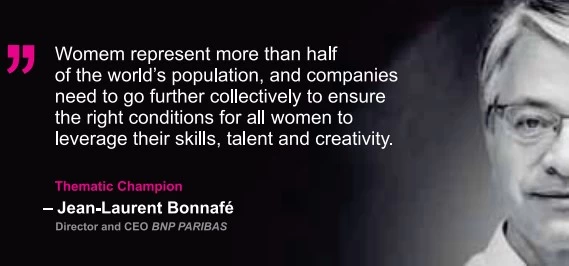
According to the cartoon, a) there is no friendship - FAMERP 2021
Inglês - 2021Leia a tirinha para responder às questões 19 e 20.

No trecho do primeiro quadrinho “We should do this more - FAMERP 2021
Inglês - 2021Leia a tirinha para responder às questões 19 e 20.

Examine o cartum de Christopher Weyant, publicado - UNESP 2021/Prova I
Inglês - 2021Examine o cartum de Christopher Weyant, publicado em sua conta no Instagram em 16.08.2018.
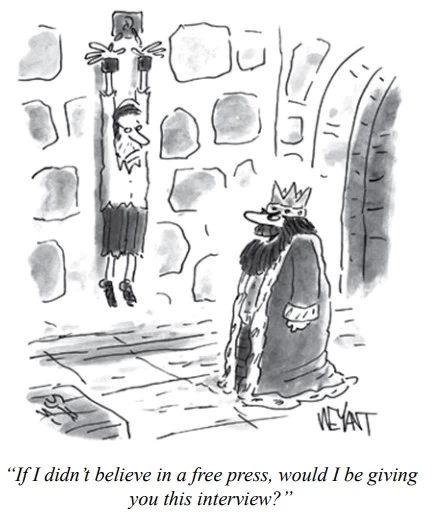
Examine o meme publicado pela comunidade “The - UNESP 2021/Prova I
Inglês - 2021Examine o meme publicado pela comunidade “The Language Nerds” em sua conta no Instagram em 28.02.2020.

Examine o cartum de Caitlin Cass, publicado no - UNIFESP 2021
Inglês - 2021Examine o cartum de Caitlin Cass, publicado no Instagram da revista The New Yorker em 10.03.2019.
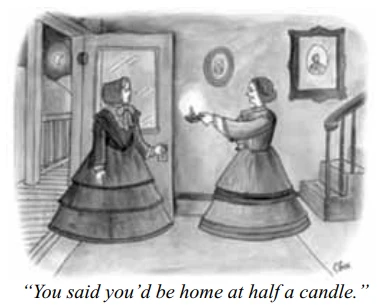
According to the first paragraph, it is important - UNESP 2021/Prova I
Inglês - 2021Leia o texto para responder às questões de 21 a 23.
EDUCATION FOR SUSTAINABLE DEVELOPMENT

With a world population of 7 billion people and limited natural resources, we, as individuals and societies, need to learn to live together sustainably. We need to take action responsibly based on the understanding that what we do today can have implications on the lives of people and the planet in future. Education for Sustainable Development empowers people to change the way they think and work towards a sustainable future.
UNESCO aims to improve access to quality education on sustainable development at all levels and in all social contexts, to transform society by reorienting education and help people develop knowledge, skills, values and behaviours needed for sustainable development. It is about including sustainable development issues, such as climate change and biodiversity into teaching and learning. Individuals are encouraged to be responsible actors who resolve challenges, respect cultural diversity and contribute to creating a more sustainable world.
According to the second paragraph, one of - UNESP 2021/Prova I
Inglês - 2021Leia o texto para responder às questões de 21 a 23.
EDUCATION FOR SUSTAINABLE DEVELOPMENT

With a world population of 7 billion people and limited natural resources, we, as individuals and societies, need to learn to live together sustainably. We need to take action responsibly based on the understanding that what we do today can have implications on the lives of people and the planet in future. Education for Sustainable Development empowers people to change the way they think and work towards a sustainable future.
UNESCO aims to improve access to quality education on sustainable development at all levels and in all social contexts, to transform society by reorienting education and help people develop knowledge, skills, values and behaviours needed for sustainable development. It is about including sustainable development issues, such as climate change and biodiversity into teaching and learning. Individuals are encouraged to be responsible actors who resolve challenges, respect cultural diversity and contribute to creating a more sustainable world.
O cartum dialoga com o seguinte trecho do texto - UNESP 2021/Prova I
Inglês - 2021Leia o texto para responder às questões de 21 a 23.
EDUCATION FOR SUSTAINABLE DEVELOPMENT

With a world population of 7 billion people and limited natural resources, we, as individuals and societies, need to learn to live together sustainably. We need to take action responsibly based on the understanding that what we do today can have implications on the lives of people and the planet in future. Education for Sustainable Development empowers people to change the way they think and work towards a sustainable future.
UNESCO aims to improve access to quality education on sustainable development at all levels and in all social contexts, to transform society by reorienting education and help people develop knowledge, skills, values and behaviours needed for sustainable development. It is about including sustainable development issues, such as climate change and biodiversity into teaching and learning. Individuals are encouraged to be responsible actors who resolve challenges, respect cultural diversity and contribute to creating a more sustainable world.
Analise o cartum. A fala do personagem a) - UNESP 2021/Prova I
Inglês - 2021Analise o cartum.

The chart shows that the average share of - UNESP 2021/Prova I
Inglês - 2021Analise o gráfico e leia o texto para responder às questões de 25 a 30.

Three-quarters of the world’s children live in countries where classrooms are closed. As lockdowns ease, schools should be among the first places to reopen. Children seem to be less likely than adults to catch covid-19. And the costs of closure are staggering: in the lost productivity of home schooling parents; and, far more important, in the damage done to children by lost learning. The costs fall most heavily on the youngest, who among other things miss out on picking up social and emotional skills; and on the less well-off, who are less likely to attend online lessons and who may be missing meals as well as classes. West African children whose schools were closed during the Ebola epidemic in 2014 are still paying the price.
(www.economist.com, 01.05.2020. Adaptado.)
De acordo com o texto, o fechamento das escolas - UNESP 2021/Prova I
Inglês - 2021Analise o gráfico e leia o texto para responder às questões de 25 a 30.

Three-quarters of the world’s children live in countries where classrooms are closed. As lockdowns ease, schools should be among the first places to reopen. Children seem to be less likely than adults to catch covid-19. And the costs of closure are staggering: in the lost productivity of home schooling parents; and, far more important, in the damage done to children by lost learning. The costs fall most heavily on the youngest, who among other things miss out on picking up social and emotional skills; and on the less well-off, who are less likely to attend online lessons and who may be missing meals as well as classes. West African children whose schools were closed during the Ebola epidemic in 2014 are still paying the price.
(www.economist.com, 01.05.2020. Adaptado.)
O trecho “West African children whose schools - UNESP 2021/Prova I
Inglês - 2021Analise o gráfico e leia o texto para responder às questões de 25 a 30.

Three-quarters of the world’s children live in countries where classrooms are closed. As lockdowns ease, schools should be among the first places to reopen. Children seem to be less likely than adults to catch covid-19. And the costs of closure are staggering: in the lost productivity of home schooling parents; and, far more important, in the damage done to children by lost learning. The costs fall most heavily on the youngest, who among other things miss out on picking up social and emotional skills; and on the less well-off, who are less likely to attend online lessons and who may be missing meals as well as classes. West African children whose schools were closed during the Ebola epidemic in 2014 are still paying the price.
(www.economist.com, 01.05.2020. Adaptado.)
No trecho “As lockdowns ease, schools should be - UNESP 2021/Prova I
Inglês - 2021Analise o gráfico e leia o texto para responder às questões de 25 a 30.

Three-quarters of the world’s children live in countries where classrooms are closed. As lockdowns ease, schools should be among the first places to reopen. Children seem to be less likely than adults to catch covid-19. And the costs of closure are staggering: in the lost productivity of home schooling parents; and, far more important, in the damage done to children by lost learning. The costs fall most heavily on the youngest, who among other things miss out on picking up social and emotional skills; and on the less well-off, who are less likely to attend online lessons and who may be missing meals as well as classes. West African children whose schools were closed during the Ebola epidemic in 2014 are still paying the price.
(www.economist.com, 01.05.2020. Adaptado.)
No trecho “who are less likely to attend online - UNESP 2021/Prova I
Inglês - 2021Analise o gráfico e leia o texto para responder às questões de 25 a 30.

Three-quarters of the world’s children live in countries where classrooms are closed. As lockdowns ease, schools should be among the first places to reopen. Children seem to be less likely than adults to catch covid-19. And the costs of closure are staggering: in the lost productivity of home schooling parents; and, far more important, in the damage done to children by lost learning. The costs fall most heavily on the youngest, who among other things miss out on picking up social and emotional skills; and on the less well-off, who are less likely to attend online lessons and who may be missing meals as well as classes. West African children whose schools were closed during the Ebola epidemic in 2014 are still paying the price.
(www.economist.com, 01.05.2020. Adaptado.)
Examine o cartum de Liana Finck, publicado em sua conta - UNIFESP 2020
Inglês - 2020Examine o cartum de Liana Finck, publicado em sua conta no Instagram em 13.08.2019.

The purpose of this infographic is to a) illustrate the - FAMERP 2020
Inglês - 2020Leia o infográfico para responder às questões de 11 a 15.
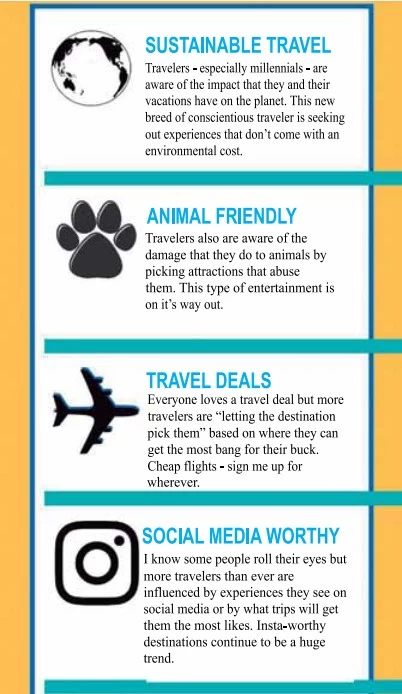
(Karmen Clair. https://karmenclair.wordpress.com, 03.04.2019. Adaptado.)
According to the infographic, a mindful traveler should - FAMERP 2020
Inglês - 2020Leia o infográfico para responder às questões de 11 a 15.

(Karmen Clair. https://karmenclair.wordpress.com, 03.04.2019. Adaptado.)
De acordo com o segundo tópico, atrações turísticas que - FAMERP 2020
Inglês - 2020Leia o infográfico para responder às questões de 11 a 15.

(Karmen Clair. https://karmenclair.wordpress.com, 03.04.2019. Adaptado.)
De acordo com o contexto do terceiro tópico, o trecho - FAMERP 2020
Inglês - 2020Leia o infográfico para responder às questões de 11 a 15.

(Karmen Clair. https://karmenclair.wordpress.com, 03.04.2019. Adaptado.)
In the excerpt from the fourth topic “continue to be a - FAMERP 2020
Inglês - 2020Leia o infográfico para responder às questões de 11 a 15.

(Karmen Clair. https://karmenclair.wordpress.com, 03.04.2019. Adaptado.)
The author’s aim is to a) protest against the results - FAMERP 2020
Inglês - 2020Leia o texto para responder às questões 16 e 17.
The Mona Lisa was recently moved from her usual gallery in the Salle des États, currently being renovated, to a temporary home in the Galérie Médicis. Visitors to the Louvre who have queued patiently for hours are complaining that museum staff are allowing them less than a minute to view the masterpice. The relocation has created bottlenecks of visitors lining corridors and the Louvre is now advising that only those who have prebooked will be guaranteed a glimpse of the world’s most famous portrait.
(David Chazan. www.telegraph.co.uk, 13.08.2019. Adaptado.)
In the excerpt “only those who have pre-booked will be - FAMERP 2020
Inglês - 2020Leia o texto para responder às questões 16 e 17.
The Mona Lisa was recently moved from her usual gallery in the Salle des États, currently being renovated, to a temporary home in the Galérie Médicis. Visitors to the Louvre who have queued patiently for hours are complaining that museum staff are allowing them less than a minute to view the masterpice. The relocation has created bottlenecks of visitors lining corridors and the Louvre is now advising that only those who have prebooked will be guaranteed a glimpse of the world’s most famous portrait.
(David Chazan. www.telegraph.co.uk, 13.08.2019. Adaptado.)
O trecho dessa carta aberta publicada no jornal The New - FAMERP 2020
Inglês - 2020Leia o texto para responder às questões 18 e 19.
What does love look like? Love is accepting that your partner is not perfect, but you want to be with him or her anyway. Love is being grateful that you are accepted despite your imperfections. Love is still being happy to come home to that same person, even after 30 years.
(Harriet Koral. www.nytimes.com, 19.11.2017. Adaptado.)
O trecho “accepting that your partner is not perfect” - FAMERP 2020
Inglês - 2020Leia o texto para responder às questões 18 e 19.
What does love look like? Love is accepting that your partner is not perfect, but you want to be with him or her anyway. Love is being grateful that you are accepted despite your imperfections. Love is still being happy to come home to that same person, even after 30 years.
(Harriet Koral. www.nytimes.com, 19.11.2017. Adaptado.)
The art print overlaps a) inappropriate feelings. - FAMERP 2020
Inglês - 2020Observe the image.
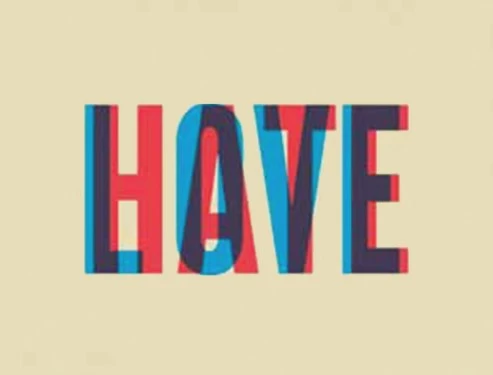
The cartoon means that a) both dogs are trying to - UNIFESP 2020
Inglês - 2020Examine o quadrinho de Peter Steiner para responder a questão.
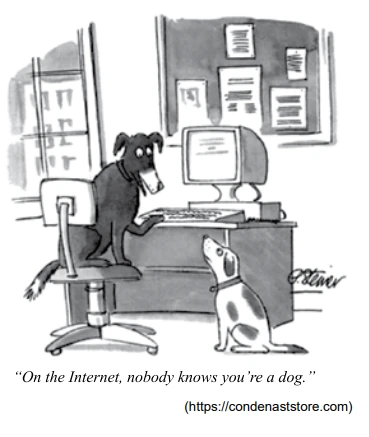
It can be inferred from the phrase “On the Internet, - UNIFESP 2020
Inglês - 2020Examine o quadrinho de Peter Steiner para responder a questão.

According to the first paragraph and the graphic images - UNIFESP 2020
Inglês - 2020Leia o texto para responder a questão.
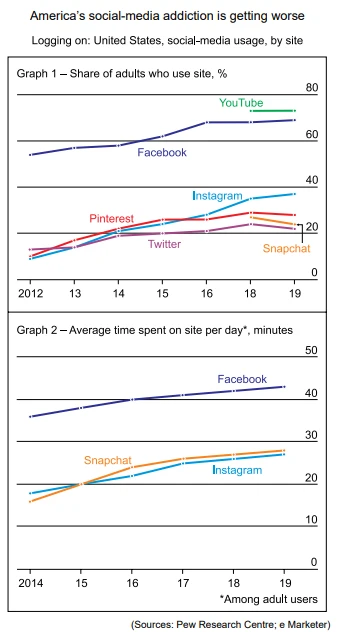
A survey in January and February 2019 from the Pew Research Centre, a think tank, found that 69% of American adults use Facebook; of these users, more than half visit the site “several times a day”. YouTube is even more popular, with 73% of adults saying they watch videos on the platform. For those aged 18 to 24, the figure is 90%. Instagram, a photo-sharing app, is used by 37% of adults. When Pew first conducted the survey in 2012, only a slim majority of Americans used Facebook. Fewer than one in ten had an Instagram account.
Americans are also spending more time than ever on social-media sites like Facebook. There is evidence that limiting such services might yield health benefits. A paper published last year by Melissa Hunt, Rachel Marx, Courtney Lipson and Jordyn Young, all of the University of Pennsylvania, found that limiting social-media usage to 10 minutes a day led to reductions in loneliness, depression, anxiety and fear. Another paper from 2014 identified a link between heavy social-media usage and depression, largely due to a “social comparison” phenomenon, whereby users compare themselves to others and come away with lower evaluations of themselves.
(www.economist.com, 08.08.2019. Adaptado.)
19 No trecho do primeiro parágrafo “of these users, - UNIFESP 2020
Inglês - 2020Leia o texto para responder a questão.

A survey in January and February 2019 from the Pew Research Centre, a think tank, found that 69% of American adults use Facebook; of these users, more than half visit the site “several times a day”. YouTube is even more popular, with 73% of adults saying they watch videos on the platform. For those aged 18 to 24, the figure is 90%. Instagram, a photo-sharing app, is used by 37% of adults. When Pew first conducted the survey in 2012, only a slim majority of Americans used Facebook. Fewer than one in ten had an Instagram account.
Americans are also spending more time than ever on social-media sites like Facebook. There is evidence that limiting such services might yield health benefits. A paper published last year by Melissa Hunt, Rachel Marx, Courtney Lipson and Jordyn Young, all of the University of Pennsylvania, found that limiting social-media usage to 10 minutes a day led to reductions in loneliness, depression, anxiety and fear. Another paper from 2014 identified a link between heavy social-media usage and depression, largely due to a “social comparison” phenomenon, whereby users compare themselves to others and come away with lower evaluations of themselves.
(www.economist.com, 08.08.2019. Adaptado.)
O trecho do primeiro parágrafo “Fewer than one in ten - UNIFESP 2020
Inglês - 2020Leia o texto para responder a questão.

A survey in January and February 2019 from the Pew Research Centre, a think tank, found that 69% of American adults use Facebook; of these users, more than half visit the site “several times a day”. YouTube is even more popular, with 73% of adults saying they watch videos on the platform. For those aged 18 to 24, the figure is 90%. Instagram, a photo-sharing app, is used by 37% of adults. When Pew first conducted the survey in 2012, only a slim majority of Americans used Facebook. Fewer than one in ten had an Instagram account.
Americans are also spending more time than ever on social-media sites like Facebook. There is evidence that limiting such services might yield health benefits. A paper published last year by Melissa Hunt, Rachel Marx, Courtney Lipson and Jordyn Young, all of the University of Pennsylvania, found that limiting social-media usage to 10 minutes a day led to reductions in loneliness, depression, anxiety and fear. Another paper from 2014 identified a link between heavy social-media usage and depression, largely due to a “social comparison” phenomenon, whereby users compare themselves to others and come away with lower evaluations of themselves.
(www.economist.com, 08.08.2019. Adaptado.)
According to the second paragraph, the excessive use - UNIFESP 2020
Inglês - 2020Leia o texto para responder a questão.

A survey in January and February 2019 from the Pew Research Centre, a think tank, found that 69% of American adults use Facebook; of these users, more than half visit the site “several times a day”. YouTube is even more popular, with 73% of adults saying they watch videos on the platform. For those aged 18 to 24, the figure is 90%. Instagram, a photo-sharing app, is used by 37% of adults. When Pew first conducted the survey in 2012, only a slim majority of Americans used Facebook. Fewer than one in ten had an Instagram account.
Americans are also spending more time than ever on social-media sites like Facebook. There is evidence that limiting such services might yield health benefits. A paper published last year by Melissa Hunt, Rachel Marx, Courtney Lipson and Jordyn Young, all of the University of Pennsylvania, found that limiting social-media usage to 10 minutes a day led to reductions in loneliness, depression, anxiety and fear. Another paper from 2014 identified a link between heavy social-media usage and depression, largely due to a “social comparison” phenomenon, whereby users compare themselves to others and come away with lower evaluations of themselves.
(www.economist.com, 08.08.2019. Adaptado.)
According to the second paragraph, the paper published - UNIFESP 2020
Inglês - 2020Leia o texto para responder a questão.

A survey in January and February 2019 from the Pew Research Centre, a think tank, found that 69% of American adults use Facebook; of these users, more than half visit the site “several times a day”. YouTube is even more popular, with 73% of adults saying they watch videos on the platform. For those aged 18 to 24, the figure is 90%. Instagram, a photo-sharing app, is used by 37% of adults. When Pew first conducted the survey in 2012, only a slim majority of Americans used Facebook. Fewer than one in ten had an Instagram account.
Americans are also spending more time than ever on social-media sites like Facebook. There is evidence that limiting such services might yield health benefits. A paper published last year by Melissa Hunt, Rachel Marx, Courtney Lipson and Jordyn Young, all of the University of Pennsylvania, found that limiting social-media usage to 10 minutes a day led to reductions in loneliness, depression, anxiety and fear. Another paper from 2014 identified a link between heavy social-media usage and depression, largely due to a “social comparison” phenomenon, whereby users compare themselves to others and come away with lower evaluations of themselves.
(www.economist.com, 08.08.2019. Adaptado.)
In the excerpt from the second paragraph “limiting - UNIFESP 2020
Inglês - 2020Leia o texto para responder a questão.

A survey in January and February 2019 from the Pew Research Centre, a think tank, found that 69% of American adults use Facebook; of these users, more than half visit the site “several times a day”. YouTube is even more popular, with 73% of adults saying they watch videos on the platform. For those aged 18 to 24, the figure is 90%. Instagram, a photo-sharing app, is used by 37% of adults. When Pew first conducted the survey in 2012, only a slim majority of Americans used Facebook. Fewer than one in ten had an Instagram account.
Americans are also spending more time than ever on social-media sites like Facebook. There is evidence that limiting such services might yield health benefits. A paper published last year by Melissa Hunt, Rachel Marx, Courtney Lipson and Jordyn Young, all of the University of Pennsylvania, found that limiting social-media usage to 10 minutes a day led to reductions in loneliness, depression, anxiety and fear. Another paper from 2014 identified a link between heavy social-media usage and depression, largely due to a “social comparison” phenomenon, whereby users compare themselves to others and come away with lower evaluations of themselves.
(www.economist.com, 08.08.2019. Adaptado.)
No trecho do segundo parágrafo “largely due to a - UNIFESP 2020
Inglês - 2020Leia o texto para responder a questão.

A survey in January and February 2019 from the Pew Research Centre, a think tank, found that 69% of American adults use Facebook; of these users, more than half visit the site “several times a day”. YouTube is even more popular, with 73% of adults saying they watch videos on the platform. For those aged 18 to 24, the figure is 90%. Instagram, a photo-sharing app, is used by 37% of adults. When Pew first conducted the survey in 2012, only a slim majority of Americans used Facebook. Fewer than one in ten had an Instagram account.
Americans are also spending more time than ever on social-media sites like Facebook. There is evidence that limiting such services might yield health benefits. A paper published last year by Melissa Hunt, Rachel Marx, Courtney Lipson and Jordyn Young, all of the University of Pennsylvania, found that limiting social-media usage to 10 minutes a day led to reductions in loneliness, depression, anxiety and fear. Another paper from 2014 identified a link between heavy social-media usage and depression, largely due to a “social comparison” phenomenon, whereby users compare themselves to others and come away with lower evaluations of themselves.
(www.economist.com, 08.08.2019. Adaptado.)
No trecho do segundo parágrafo “a ‘social comparison’ - UNIFESP 2020
Inglês - 2020Leia o texto para responder a questão.

A survey in January and February 2019 from the Pew Research Centre, a think tank, found that 69% of American adults use Facebook; of these users, more than half visit the site “several times a day”. YouTube is even more popular, with 73% of adults saying they watch videos on the platform. For those aged 18 to 24, the figure is 90%. Instagram, a photo-sharing app, is used by 37% of adults. When Pew first conducted the survey in 2012, only a slim majority of Americans used Facebook. Fewer than one in ten had an Instagram account.
Americans are also spending more time than ever on social-media sites like Facebook. There is evidence that limiting such services might yield health benefits. A paper published last year by Melissa Hunt, Rachel Marx, Courtney Lipson and Jordyn Young, all of the University of Pennsylvania, found that limiting social-media usage to 10 minutes a day led to reductions in loneliness, depression, anxiety and fear. Another paper from 2014 identified a link between heavy social-media usage and depression, largely due to a “social comparison” phenomenon, whereby users compare themselves to others and come away with lower evaluations of themselves.
(www.economist.com, 08.08.2019. Adaptado.)
There are approximately 70 million pet dogs and 74 - UNICAMP 2020
Inglês - 2020
There are approximately 70 million pet dogs and 74 million pet cats in the U.S., a country where 20 men and women are assaulted per minute. In one survey, 71 percent of domestic violence victims reported that their abuser also targeted pets. In one study of families under investigation for suspected child abuse, researchers found that pet abuse had occurred in 88 percent of these families.
A tirinha apresentada - UNICAMP 2020
Inglês - 2020
O site “Urban Dictionary” apresenta definições de - UNICAMP 2020
Inglês - 2020O site “Urban Dictionary” apresenta definições de palavras e expressões que, apesar de serem usadas popularmente, ainda não foram oficialmente dicionarizadas. O exemplo abaixo faz alusão ao Brexit, isto é, à saída do Reino Unido da União Europeia.
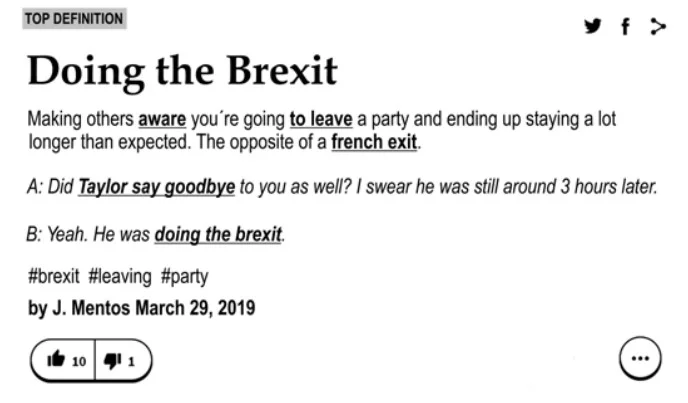
When 24-year-old fashion blogger Scarlett Dixon posted - UNICAMP 2020
Inglês - 2020
When 24-year-old fashion blogger Scarlett Dixon posted a picture of herself having breakfast, the internet turned nasty. “The best of days start with a smile and positive thoughts. And pancakes. And strawberries”, Dixon wrote on her Instagram feed. The post was reposted on Twitter. “Instagram is a ridiculous lie factory made to make us all feel inadequate”, wrote Nathan from Cardiff. His post, which has garnered more than 111,000 likes (22 times as many as Dixon’s original) and almost 25,000 retweets, prompted a wave of criticism, with comments going like “Fakelife!”.
Instagram looks like the friendliest social network imaginable. But, for a growing number of users – and mental health experts – the very positivity of Instagram is precisely the problem. The site encourages its users to present an upbeat, attractive image that others may find at best misleading and at worse harmful. Instagram makes you worry that everyone is perfect – except you.
Examine o cartum de Steinberg, publicado em seu Instagram - UNESP 2020
Inglês - 2020Examine o cartum de Steinberg, publicado em seu Instagram em 06.04.2019.

Leia a charge. a) as pessoas parecerem felizes por terem - FATEC 2023
Inglês - 2020Leia a charge.
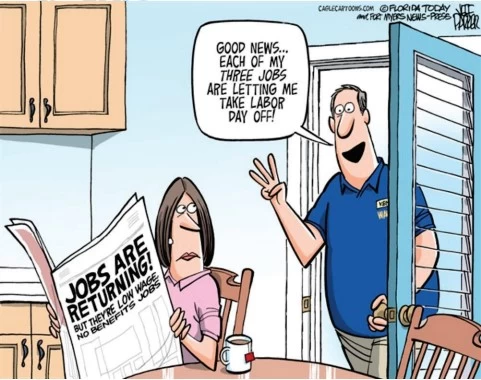
Examine o cartum de Pia Guerra, publicado no Instagram da - UNESP 2020
Inglês - 2020Examine o cartum de Pia Guerra, publicado no Instagram da revista The New Yorker em 13.11.2018.
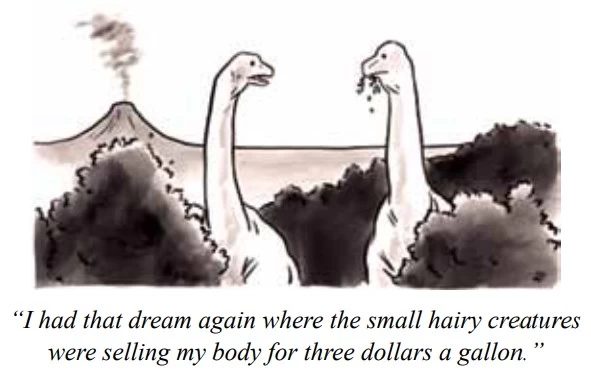
The excerpt from the second paragraph “Despite its - UNESP 2020
Inglês - 2020Leia o texto e analise os dois mapas para responder às questões de 21 a 24.

The Cerrado is one of the most threatened and overexploited regions in Brazil, second only to the Atlantic Forests in vegetation loss and deforestation. Unsustainable agricultural activities, particularly soy production and cattle ranching, as well as burning of vegetation for charcoal, continue to pose a major threat to the Cerrado’s biodiversity. Despite its environmental importance, it is one of the least protected regions in Brazil.
Facts & Figures • Covering 2 million km2, or 21% of the country’s territory, the Cerrado is the second largest vegetation type in Brazil.
• The area is equivalent to the size of England, France, Germany, Italy and Spain combined.
• More than 1,600 species of mammals, birds and reptiles have been identified in the Cerrado.
• Annual rainfall is around 800 to 1600 mm.
• The capital of Brazil, Brasilia, is located in the heart of the Cerrado.
• Only 20% of the Cerrado’s original vegetation remains intact; less than 3% of the area is currently guarded by law.
(http://wwf.panda.org. Adaptado.)

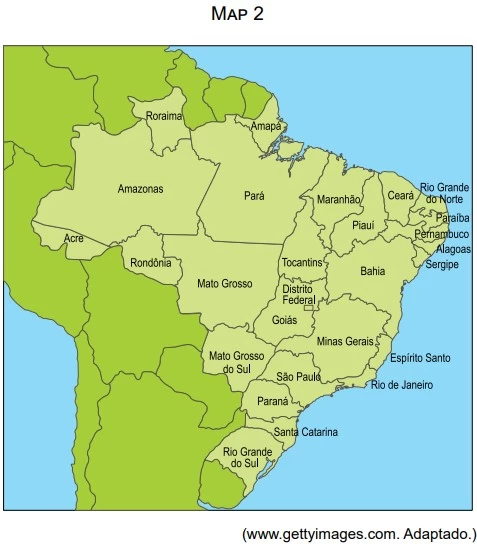
No trecho do segundo parágrafo “Despite its environmental - UNESP 2020
Inglês - 2020Leia o texto e analise os dois mapas para responder às questões de 21 a 24.

Located between the Amazon, Atlantic Forests and Pantanal, the Cerrado is the largest savanna region in South America.
The Cerrado is one of the most threatened and overexploited regions in Brazil, second only to the Atlantic Forests in vegetation loss and deforestation. Unsustainable agricultural activities, particularly soy production and cattle ranching, as well as burning of vegetation for charcoal, continue to pose a major threat to the Cerrado’s biodiversity. Despite its environmental importance, it is one of the least protected regions in Brazil.
Facts & Figures • Covering 2 million km2, or 21% of the country’s territory, the Cerrado is the second largest vegetation type in Brazil.
• The area is equivalent to the size of England, France, Germany, Italy and Spain combined.
• More than 1,600 species of mammals, birds and reptiles have been identified in the Cerrado.
• Annual rainfall is around 800 to 1600 mm.
• The capital of Brazil, Brasilia, is located in the heart of the Cerrado.
• Only 20% of the Cerrado’s original vegetation remains intact; less than 3% of the area is currently guarded by law.
(http://wwf.panda.org. Adaptado.)


The first item from Facts & Figures states that the - UNESP 2020
Inglês - 2020Leia o texto e analise os dois mapas para responder às questões de 21 a 24.

Located between the Amazon, Atlantic Forests and Pantanal, the Cerrado is the largest savanna region in South America.
The Cerrado is one of the most threatened and overexploited regions in Brazil, second only to the Atlantic Forests in vegetation loss and deforestation. Unsustainable agricultural activities, particularly soy production and cattle ranching, as well as burning of vegetation for charcoal, continue to pose a major threat to the Cerrado’s biodiversity. Despite its environmental importance, it is one of the least protected regions in Brazil.
Facts & Figures • Covering 2 million km2, or 21% of the country’s territory, the Cerrado is the second largest vegetation type in Brazil.
• The area is equivalent to the size of England, France, Germany, Italy and Spain combined.
• More than 1,600 species of mammals, birds and reptiles have been identified in the Cerrado.
• Annual rainfall is around 800 to 1600 mm.
• The capital of Brazil, Brasilia, is located in the heart of the Cerrado.
• Only 20% of the Cerrado’s original vegetation remains intact; less than 3% of the area is currently guarded by law.
(http://wwf.panda.org. Adaptado.)


By comparing maps 1 and 2, one can say that the Brazilian - UNESP 2020
Inglês - 2020Leia o texto e analise os dois mapas para responder às questões de 21 a 24.

Located between the Amazon, Atlantic Forests and Pantanal, the Cerrado is the largest savanna region in South America.
The Cerrado is one of the most threatened and overexploited regions in Brazil, second only to the Atlantic Forests in vegetation loss and deforestation. Unsustainable agricultural activities, particularly soy production and cattle ranching, as well as burning of vegetation for charcoal, continue to pose a major threat to the Cerrado’s biodiversity. Despite its environmental importance, it is one of the least protected regions in Brazil.
Facts & Figures • Covering 2 million km2, or 21% of the country’s territory, the Cerrado is the second largest vegetation type in Brazil.
• The area is equivalent to the size of England, France, Germany, Italy and Spain combined.
• More than 1,600 species of mammals, birds and reptiles have been identified in the Cerrado.
• Annual rainfall is around 800 to 1600 mm.
• The capital of Brazil, Brasilia, is located in the heart of the Cerrado.
• Only 20% of the Cerrado’s original vegetation remains intact; less than 3% of the area is currently guarded by law.
(http://wwf.panda.org. Adaptado.)


The future is largely urban By 2030, there will be 5 - UNESP 2020
Inglês - 2020The future is largely urban
By 2030, there will be 5 billion people living in urban areas (61% of the estimated world population of 8.2 billion)

O estudo mencionado no texto aponta para a discriminação - FATEC 2023
Inglês - 2020Minority ethnic Britons face ‘shocking’ job discrimination
Haroon SiddiqueThu 17 Jan 2019 17.00 GMT Last modified on Fri 18 Jan 2019 00.50 GMT
A study by experts based at the Centre for Social Investigation at Nuffield College, University of Oxford, found applicants from minority ethnic backgrounds had to send 80% more applications to get a positive response from an employer than a white person of British origin.
A linked study by the same researchers, comparing their results with similar field experiments dating back to 1969, found discrimination against black Britons and those of south Asian origin – particularly Pakistanis – unchanged over almost 50 years.
The research, part of a larger cross-national project funded by the European Union and shared exclusively with the Guardian before its official launch, prompted concerns that race relations legislation had failed.
It echoes findings published as part of the Guardian’s Bias in Britain series that people from minority ethnic backgrounds face discrimination when seeking a room to rent. In a snapshot survey of online flatshare ads the Guardian found that an applicant called Muhammad was significantly less likely to receive a positive response than an applicant called David.
Prof Anthony Heath, co-author and emeritus fellow of Nuffield College, said: “The absence of any real decline in discrimination against black British and people of Pakistani background is a disturbing finding, which calls into question the effectiveness of previous policies. Ethnic inequality remains a burning injustice and there needs to be a radical rethink about how to tackle it.”
Dr Zubaida Haque, the deputy director of the race equality thinktank Runnymede, described the findings as shocking. They demonstrated that “it’s not just covert racism or unconscious bias that we need to worry about; it’s overt and conscious racism, where applicants are getting shortlisted on the basis of their ethnicity and/or name”, she said.
“It’s clear that race relations legislation is not sufficient to hold employers to account. There are no real consequences for employers of racially discriminating in subtle ways, but for BME* applicants or employees it means higher unemployment, lower wages, poorer conditions and less security in work and life.”
*BME – Black and Minority Ethnicity
The objective of the comic is to a) promote the recycling - UNESP 2020
Inglês - 2020Analyse the following comic.
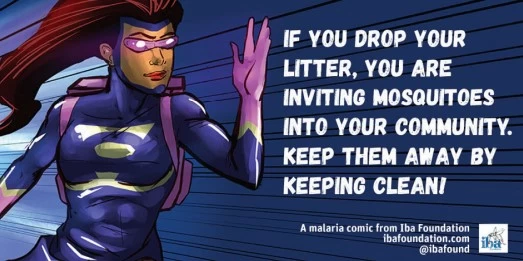
Segundo o texto, estudos indicam que a discriminação está - FATEC 2020
Inglês - 2020Minority ethnic Britons face ‘shocking’ job discrimination
Haroon SiddiqueThu 17 Jan 2019 17.00 GMT Last modified on Fri 18 Jan 2019 00.50 GMT
A study by experts based at the Centre for Social Investigation at Nuffield College, University of Oxford, found applicants from minority ethnic backgrounds had to send 80% more applications to get a positive response from an employer than a white person of British origin.
A linked study by the same researchers, comparing their results with similar field experiments dating back to 1969, found discrimination against black Britons and those of south Asian origin – particularly Pakistanis – unchanged over almost 50 years.
The research, part of a larger cross-national project funded by the European Union and shared exclusively with the Guardian before its official launch, prompted concerns that race relations legislation had failed.
It echoes findings published as part of the Guardian’s Bias in Britain series that people from minority ethnic backgrounds face discrimination when seeking a room to rent. In a snapshot survey of online flatshare ads the Guardian found that an applicant called Muhammad was significantly less likely to receive a positive response than an applicant called David.
Prof Anthony Heath, co-author and emeritus fellow of Nuffield College, said: “The absence of any real decline in discrimination against black British and people of Pakistani background is a disturbing finding, which calls into question the effectiveness of previous policies. Ethnic inequality remains a burning injustice and there needs to be a radical rethink about how to tackle it.”
Dr Zubaida Haque, the deputy director of the race equality thinktank Runnymede, described the findings as shocking. They demonstrated that “it’s not just covert racism or unconscious bias that we need to worry about; it’s overt and conscious racism, where applicants are getting shortlisted on the basis of their ethnicity and/or name”, she said.
“It’s clear that race relations legislation is not sufficient to hold employers to account. There are no real consequences for employers of racially discriminating in subtle ways, but for BME* applicants or employees it means higher unemployment, lower wages, poorer conditions and less security in work and life.”
*BME – Black and Minority Ethnicity
De acordo com o texto, a Tropicália a) congregou artistas - UNESP 2020
Inglês - 2020Leia o texto sobre uma exposição no museu Tate Modern, em Londres, para responder às questões de 27 a 30.

(Hélio Oiticica. Tropicália, Penetrables PN2 “Purity is a myth” and PN3 “Imagetical”, 1966-1967.)
Tropicália
Tropicália is used to describe the explosion of cultural creativity in Rio de Janeiro and São Paulo in 1968 as Brazil’s military regime tightened its grip on power.
Many of the artists, writers and musicians associated with Tropicália came of age during the 1950s in a time of intense optimism when the cultural world had been encouraged to play a central role in the creation of a democratic, socially just and modern Brazil. Nevertheless, a military coup in 1964 had brought to power a right-wing regime at odds with the concerns of left-wing artists. Tropicália became a way of exposing the contradictions of modernisation under such an authoritarian rule.
The word Tropicália comes from an installation by the artist Hélio Oiticica, who created environments that were designed to encourage the viewer’s emotional and intellectual participation. Oiticica called them “penetrables” because people were originally encouraged to enter them. They mimic the improvised, colourful dwellings in Rio de Janeiro’s favelas, or shanty towns. The lush plants and sand help to convey a sense of the tropical character of the city. When Oiticica exhibited the work, he also included live parrots.
From its beginning, Tropicália was seen as a rearticulation of Anthropophagia (“cannibalism”), an artistic ideology promoted by Oswald de Andrade.
(www.tate.org.uk. Adaptado.)
De acordo com o Professor Anthony Heath, o que causa - FATEC 2020
Inglês - 2020Minority ethnic Britons face ‘shocking’ job discrimination
Haroon SiddiqueThu 17 Jan 2019 17.00 GMT Last modified on Fri 18 Jan 2019 00.50 GMT
A study by experts based at the Centre for Social Investigation at Nuffield College, University of Oxford, found applicants from minority ethnic backgrounds had to send 80% more applications to get a positive response from an employer than a white person of British origin.
A linked study by the same researchers, comparing their results with similar field experiments dating back to 1969, found discrimination against black Britons and those of south Asian origin – particularly Pakistanis – unchanged over almost 50 years.
The research, part of a larger cross-national project funded by the European Union and shared exclusively with the Guardian before its official launch, prompted concerns that race relations legislation had failed.
It echoes findings published as part of the Guardian’s Bias in Britain series that people from minority ethnic backgrounds face discrimination when seeking a room to rent. In a snapshot survey of online flatshare ads the Guardian found that an applicant called Muhammad was significantly less likely to receive a positive response than an applicant called David.
Prof Anthony Heath, co-author and emeritus fellow of Nuffield College, said: “The absence of any real decline in discrimination against black British and people of Pakistani background is a disturbing finding, which calls into question the effectiveness of previous policies. Ethnic inequality remains a burning injustice and there needs to be a radical rethink about how to tackle it.”
Dr Zubaida Haque, the deputy director of the race equality thinktank Runnymede, described the findings as shocking. They demonstrated that “it’s not just covert racism or unconscious bias that we need to worry about; it’s overt and conscious racism, where applicants are getting shortlisted on the basis of their ethnicity and/or name”, she said.
“It’s clear that race relations legislation is not sufficient to hold employers to account. There are no real consequences for employers of racially discriminating in subtle ways, but for BME* applicants or employees it means higher unemployment, lower wages, poorer conditions and less security in work and life.”
*BME – Black and Minority Ethnicity
No trecho do segundo parágrafo “Nevertheless, a military - UNESP 2020
Inglês - 2020Leia o texto sobre uma exposição no museu Tate Modern, em Londres, para responder às questões de 27 a 30.

(Hélio Oiticica. Tropicália, Penetrables PN2 “Purity is a myth” and PN3 “Imagetical”, 1966-1967.)
Tropicália
Tropicália is used to describe the explosion of cultural creativity in Rio de Janeiro and São Paulo in 1968 as Brazil’s military regime tightened its grip on power.
Many of the artists, writers and musicians associated with Tropicália came of age during the 1950s in a time of intense optimism when the cultural world had been encouraged to play a central role in the creation of a democratic, socially just and modern Brazil. Nevertheless, a military coup in 1964 had brought to power a right-wing regime at odds with the concerns of left-wing artists. Tropicália became a way of exposing the contradictions of modernisation under such an authoritarian rule.
The word Tropicália comes from an installation by the artist Hélio Oiticica, who created environments that were designed to encourage the viewer’s emotional and intellectual participation. Oiticica called them “penetrables” because people were originally encouraged to enter them. They mimic the improvised, colourful dwellings in Rio de Janeiro’s favelas, or shanty towns. The lush plants and sand help to convey a sense of the tropical character of the city. When Oiticica exhibited the work, he also included live parrots.
From its beginning, Tropicália was seen as a rearticulation of Anthropophagia (“cannibalism”), an artistic ideology promoted by Oswald de Andrade.
(www.tate.org.uk. Adaptado.)
Segundo a fala da Dra. Zubaida Haque, o mais preocupante - FATEC 2020
Inglês - 2020Minority ethnic Britons face ‘shocking’ job discrimination
Haroon SiddiqueThu 17 Jan 2019 17.00 GMT Last modified on Fri 18 Jan 2019 00.50 GMT
A study by experts based at the Centre for Social Investigation at Nuffield College, University of Oxford, found applicants from minority ethnic backgrounds had to send 80% more applications to get a positive response from an employer than a white person of British origin.
A linked study by the same researchers, comparing their results with similar field experiments dating back to 1969, found discrimination against black Britons and those of south Asian origin – particularly Pakistanis – unchanged over almost 50 years.
The research, part of a larger cross-national project funded by the European Union and shared exclusively with the Guardian before its official launch, prompted concerns that race relations legislation had failed.
It echoes findings published as part of the Guardian’s Bias in Britain series that people from minority ethnic backgrounds face discrimination when seeking a room to rent. In a snapshot survey of online flatshare ads the Guardian found that an applicant called Muhammad was significantly less likely to receive a positive response than an applicant called David.
Prof Anthony Heath, co-author and emeritus fellow of Nuffield College, said: “The absence of any real decline in discrimination against black British and people of Pakistani background is a disturbing finding, which calls into question the effectiveness of previous policies. Ethnic inequality remains a burning injustice and there needs to be a radical rethink about how to tackle it.”
Dr Zubaida Haque, the deputy director of the race equality thinktank Runnymede, described the findings as shocking. They demonstrated that “it’s not just covert racism or unconscious bias that we need to worry about; it’s overt and conscious racism, where applicants are getting shortlisted on the basis of their ethnicity and/or name”, she said.
“It’s clear that race relations legislation is not sufficient to hold employers to account. There are no real consequences for employers of racially discriminating in subtle ways, but for BME* applicants or employees it means higher unemployment, lower wages, poorer conditions and less security in work and life.”
*BME – Black and Minority Ethnicity
No trecho do segundo parágrafo “a right-wing regime at - UNESP 2020
Inglês - 2020Leia o texto sobre uma exposição no museu Tate Modern, em Londres, para responder às questões de 27 a 30.

(Hélio Oiticica. Tropicália, Penetrables PN2 “Purity is a myth” and PN3 “Imagetical”, 1966-1967.)
Tropicália
Tropicália is used to describe the explosion of cultural creativity in Rio de Janeiro and São Paulo in 1968 as Brazil’s military regime tightened its grip on power.
Many of the artists, writers and musicians associated with Tropicália came of age during the 1950s in a time of intense optimism when the cultural world had been encouraged to play a central role in the creation of a democratic, socially just and modern Brazil. Nevertheless, a military coup in 1964 had brought to power a right-wing regime at odds with the concerns of left-wing artists. Tropicália became a way of exposing the contradictions of modernisation under such an authoritarian rule.
The word Tropicália comes from an installation by the artist Hélio Oiticica, who created environments that were designed to encourage the viewer’s emotional and intellectual participation. Oiticica called them “penetrables” because people were originally encouraged to enter them. They mimic the improvised, colourful dwellings in Rio de Janeiro’s favelas, or shanty towns. The lush plants and sand help to convey a sense of the tropical character of the city. When Oiticica exhibited the work, he also included live parrots.
From its beginning, Tropicália was seen as a rearticulation of Anthropophagia (“cannibalism”), an artistic ideology promoted by Oswald de Andrade.
(www.tate.org.uk. Adaptado.)
A diretora do grupo Runnymede acredita que o panorama - FATEC 2020
Inglês - 2020Minority ethnic Britons face ‘shocking’ job discrimination
Haroon SiddiqueThu 17 Jan 2019 17.00 GMT Last modified on Fri 18 Jan 2019 00.50 GMT
A study by experts based at the Centre for Social Investigation at Nuffield College, University of Oxford, found applicants from minority ethnic backgrounds had to send 80% more applications to get a positive response from an employer than a white person of British origin.
A linked study by the same researchers, comparing their results with similar field experiments dating back to 1969, found discrimination against black Britons and those of south Asian origin – particularly Pakistanis – unchanged over almost 50 years.
The research, part of a larger cross-national project funded by the European Union and shared exclusively with the Guardian before its official launch, prompted concerns that race relations legislation had failed.
It echoes findings published as part of the Guardian’s Bias in Britain series that people from minority ethnic backgrounds face discrimination when seeking a room to rent. In a snapshot survey of online flatshare ads the Guardian found that an applicant called Muhammad was significantly less likely to receive a positive response than an applicant called David.
Prof Anthony Heath, co-author and emeritus fellow of Nuffield College, said: “The absence of any real decline in discrimination against black British and people of Pakistani background is a disturbing finding, which calls into question the effectiveness of previous policies. Ethnic inequality remains a burning injustice and there needs to be a radical rethink about how to tackle it.”
Dr Zubaida Haque, the deputy director of the race equality thinktank Runnymede, described the findings as shocking. They demonstrated that “it’s not just covert racism or unconscious bias that we need to worry about; it’s overt and conscious racism, where applicants are getting shortlisted on the basis of their ethnicity and/or name”, she said.
“It’s clear that race relations legislation is not sufficient to hold employers to account. There are no real consequences for employers of racially discriminating in subtle ways, but for BME* applicants or employees it means higher unemployment, lower wages, poorer conditions and less security in work and life.”
*BME – Black and Minority Ethnicity
De acordo com o terceiro parágrafo, a obra Tropicália, de - UNESP 2020
Inglês - 2020Leia o texto sobre uma exposição no museu Tate Modern, em Londres, para responder às questões de 27 a 30.

(Hélio Oiticica. Tropicália, Penetrables PN2 “Purity is a myth” and PN3 “Imagetical”, 1966-1967.)
Tropicália
Tropicália is used to describe the explosion of cultural creativity in Rio de Janeiro and São Paulo in 1968 as Brazil’s military regime tightened its grip on power.
Many of the artists, writers and musicians associated with Tropicália came of age during the 1950s in a time of intense optimism when the cultural world had been encouraged to play a central role in the creation of a democratic, socially just and modern Brazil. Nevertheless, a military coup in 1964 had brought to power a right-wing regime at odds with the concerns of left-wing artists. Tropicália became a way of exposing the contradictions of modernisation under such an authoritarian rule.
The word Tropicália comes from an installation by the artist Hélio Oiticica, who created environments that were designed to encourage the viewer’s emotional and intellectual participation. Oiticica called them “penetrables” because people were originally encouraged to enter them. They mimic the improvised, colourful dwellings in Rio de Janeiro’s favelas, or shanty towns. The lush plants and sand help to convey a sense of the tropical character of the city. When Oiticica exhibited the work, he also included live parrots.
From its beginning, Tropicália was seen as a rearticulation of Anthropophagia (“cannibalism”), an artistic ideology promoted by Oswald de Andrade.
(www.tate.org.uk. Adaptado.)
A Associação Canadense de Saúde Mental é uma - UNICAMP 2020
Inglês - 2020A Associação Canadense de Saúde Mental é uma organização sem fins lucrativos que combate o estigma sobre a saúde mental, promovendo ações em favor de pessoas que sofrem com doenças dessa natureza. O cartaz abaixo, direcionado à população em geral, foi publicado no site dessa associação.

To me, science is one way of connecting with the myster - UNICAMP 2020
Inglês - 2020
To me, science is one way of connecting with the mystery of existence. And if you think of it that way, the mystery of existence is something that we have wondered about ever since people began asking questions about who we are and where we come from. So while those questions are now part of scientific research, they are much, much older than science. I’m talking about science as part of a much grander and older sort of questioning about who we are in the big picture of the universe. To me, as a theoretical physicist and also someone who spends time out in the mountains, this sort of questioning offers a deeply spiritual connection with the world, through my mind and through my body. Einstein would have said the same thing, I think, with his cosmic religious feeling.
John Milton and Freedom of Speech on Campus By Daniel - UNICAMP 2020
Inglês - 2020John Milton and Freedom of Speech on Campus
By Daniel F. Sullivan
A few years ago, at a seminar meant to help college presidents think about the issues they face as campus leaders, I read John Milton's Areopagitica: A speech for the liberty of unlicensed printing to the parliament of England. Originally published in 1644, Areopagitica makes a powerful argument for freedom of speech and against censorship in publishing. After twenty years as a college president, having experienced and observed many calls to censor, I've come to believe that there is not much to know on the topic beyond what Milton wrote over 350 years ago.
Areopagitica was published in response “to Parliament's ordinance for licensing the press of June 14, 1643.” The effect of the ordinance against which Milton wrote “was to give Archbishop Laud, who was also Chancellor of the University of Oxford, control over every press in England, with power to stop publication of any book contrary to the Doctrine of the Church of England.” This was disturbing to Milton, who wrote, “as good almost kill a man as kill a good book: [he] who kills a man kills a reasonable creature; but he who destroys a good book, kills reason itself.”
The title which best summarizes the content of the text is: - FGV 2020
Inglês - 2020Read the text
There’s something faintly embarrassing about the 50th anniversary of the first moonwalk. It was just so long ago. It’s no longer “we” who put a man on the moon, it’s “they” who put a man on the moon. So why can’t “we” do it? It’s hard not to feel that for all the technological advances of the last halfcentury, America has lost something — the ability to unite and overcome long odds to achieve greatness.
At one level, this is silly. The U.S. stopped going to the moon because Americans stopped seeing the point of it, not because they stopped being capable of it. Still, the historic Mercury, Gemini, and Apollo programs do have something to teach us. Months before the moon landing, the journal Science wrote that the space program’s “most valuable spin-off of all will be human rather than technological: better knowledge of how to plan, coordinate and monitor the multitudinous and varied activities of the organizations required to accomplish great social undertakings.” So, here, lessons the Apollo has left behind.
1. _____________ President John Kennedy simplified NASA’s job with his 1961 address to Congress committing to “the goal, before this decade is out, of landing a man on the moon and returning him safely to Earth.” From then on, any decision was made by whether it would aid or impede the agency in meeting that deadline. Experiments that were too heavy were shelved, however valuable they might have been. Technologies that were superior but not ready for deployment were set aside. Having a North Star to pursue was essential, because skeptics and critics abounded. Amid protests over the Vietnam war and race riots, NASA engineers kept their heads down and their slide rules busy.
2. Harness incongruence. In any large organization there is pressure to suppress dissent. That can be deadly, as it was for NASA in the two space shuttle failures — Challenger and Columbia — each of which killed all seven crew members. Leading up to both tragedies, the fact that engineers grew concerned about a technical problem they did not fully understand, but they could not make a quantitative case; and were consequently ignored.
After the bad years of the shuttle disasters, the practice of harnessing incongruence, and learning from mistakes, has staged something of a revival at NASA, which has since successfully sent unmanned craft to Mars, Jupiter and Saturn. Says Adam Stelzner, a NASA engineer, “Listen to all that the problem has to say, do not make assumptions or commit to a plan of action based on them until the deepest truth presents itself ”.
3. Delegate but decide. NASA realized early on that it needed help. About 90% of Apollo’s budget was spent on contractors from the most varied places. NASA itself was, therefore, more of a confederation than a single agency.
With so many players involved, turf wars were unavoidable. NASA Administrator James Webb coined the phrase Space Age Management to describe how he tried to manage conflicts and ensure final decisions were made by headquarters. Unfortunately, Webb’s mastery of the complex network was not as thorough as he believed. The death of three astronauts during a routine test in 1967 was traced to deficiencies Webb had been unaware of. Failure, in this case, was as instructive as success.
4. Effectiveness and elegance. Aesthetically, the Apollo mission was poor. The module that touched down on the moon looked like an oversize version of a kid’s cardboard science project, all right angles and skinny legs. Apollo’s return to Earth was equally unglamorous. The spaceship that left the launch pad was awesome; what was, by plan, to be rescued from the Pacific Ocean was a stubby cone weighing just 0.2% of the majestic original. But what looks clunky and awkward to an outsider may appear elegant to an engineer. Engineering inelegance, by contrast, would be redesigning a machine without fully anticipating the consequences.
Most of the people alive today had not yet arrived on the planet when Armstrong, Aldrin and Commander Michael Collins returned to it after their historic voyage. Never mind, though. The moon landing was a victory for all of the human race, past, present, and future.
(Peter Coy. Bloomberg Businessweek, 22.07.2019. Adapted.)
A peça publicitária a) questiona se aquele seria o - UNICAMP 2020
Inglês - 2020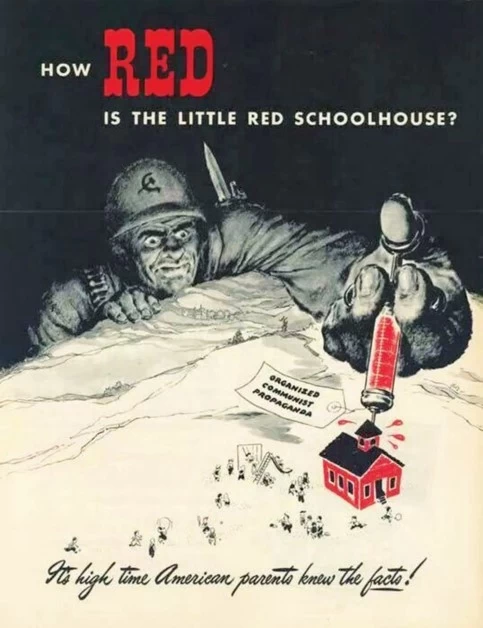
In the fragment from the first paragraph “It’s no longer - FGV 2020
Inglês - 2020Read the text
There’s something faintly embarrassing about the 50th anniversary of the first moonwalk. It was just so long ago. It’s no longer “we” who put a man on the moon, it’s “they” who put a man on the moon. So why can’t “we” do it? It’s hard not to feel that for all the technological advances of the last halfcentury, America has lost something — the ability to unite and overcome long odds to achieve greatness.
At one level, this is silly. The U.S. stopped going to the moon because Americans stopped seeing the point of it, not because they stopped being capable of it. Still, the historic Mercury, Gemini, and Apollo programs do have something to teach us. Months before the moon landing, the journal Science wrote that the space program’s “most valuable spin-off of all will be human rather than technological: better knowledge of how to plan, coordinate and monitor the multitudinous and varied activities of the organizations required to accomplish great social undertakings.” So, here, lessons the Apollo has left behind.
1. _____________ President John Kennedy simplified NASA’s job with his 1961 address to Congress committing to “the goal, before this decade is out, of landing a man on the moon and returning him safely to Earth.” From then on, any decision was made by whether it would aid or impede the agency in meeting that deadline. Experiments that were too heavy were shelved, however valuable they might have been. Technologies that were superior but not ready for deployment were set aside. Having a North Star to pursue was essential, because skeptics and critics abounded. Amid protests over the Vietnam war and race riots, NASA engineers kept their heads down and their slide rules busy.
2. Harness incongruence. In any large organization there is pressure to suppress dissent. That can be deadly, as it was for NASA in the two space shuttle failures — Challenger and Columbia — each of which killed all seven crew members. Leading up to both tragedies, the fact that engineers grew concerned about a technical problem they did not fully understand, but they could not make a quantitative case; and were consequently ignored.
After the bad years of the shuttle disasters, the practice of harnessing incongruence, and learning from mistakes, has staged something of a revival at NASA, which has since successfully sent unmanned craft to Mars, Jupiter and Saturn. Says Adam Stelzner, a NASA engineer, “Listen to all that the problem has to say, do not make assumptions or commit to a plan of action based on them until the deepest truth presents itself ”.
3. Delegate but decide. NASA realized early on that it needed help. About 90% of Apollo’s budget was spent on contractors from the most varied places. NASA itself was, therefore, more of a confederation than a single agency.
With so many players involved, turf wars were unavoidable. NASA Administrator James Webb coined the phrase Space Age Management to describe how he tried to manage conflicts and ensure final decisions were made by headquarters. Unfortunately, Webb’s mastery of the complex network was not as thorough as he believed. The death of three astronauts during a routine test in 1967 was traced to deficiencies Webb had been unaware of. Failure, in this case, was as instructive as success.
4. Effectiveness and elegance. Aesthetically, the Apollo mission was poor. The module that touched down on the moon looked like an oversize version of a kid’s cardboard science project, all right angles and skinny legs. Apollo’s return to Earth was equally unglamorous. The spaceship that left the launch pad was awesome; what was, by plan, to be rescued from the Pacific Ocean was a stubby cone weighing just 0.2% of the majestic original. But what looks clunky and awkward to an outsider may appear elegant to an engineer. Engineering inelegance, by contrast, would be redesigning a machine without fully anticipating the consequences.
Most of the people alive today had not yet arrived on the planet when Armstrong, Aldrin and Commander Michael Collins returned to it after their historic voyage. Never mind, though. The moon landing was a victory for all of the human race, past, present, and future.
(Peter Coy. Bloomberg Businessweek, 22.07.2019. Adapted.)
Nuclear fusion is a reaction in which atomic nuclei - UNICAMP 2020
Inglês - 2020Nuclear fusion is a reaction in which atomic nuclei merge to form the nucleus of a new atom. The mass of the new atom’s nucleus is lower than the sum of the merging nuclei’s masses, a difference that is released as energy. This is, for instance, the reaction that occurs in the Sun. The energy released during fusion can be calculated by the equation E = Δmc2, where Δm is the difference between the initial and final masses in the reaction, and c is the speed of light. When calculating the aforementioned energy, nucleus mass can be conveniently quantified using the atomic mass unit (u), which is roughly equivalent to 900 MeV (1 u → 900 MeV). Consider the hypothetical nuclear fusion reaction 222X + 4Y → 221Z.
The expression from the first paragraph “overcome long - FGV 2020
Inglês - 2020Read the text
There’s something faintly embarrassing about the 50th anniversary of the first moonwalk. It was just so long ago. It’s no longer “we” who put a man on the moon, it’s “they” who put a man on the moon. So why can’t “we” do it? It’s hard not to feel that for all the technological advances of the last halfcentury, America has lost something — the ability to unite and overcome long odds to achieve greatness.
At one level, this is silly. The U.S. stopped going to the moon because Americans stopped seeing the point of it, not because they stopped being capable of it. Still, the historic Mercury, Gemini, and Apollo programs do have something to teach us. Months before the moon landing, the journal Science wrote that the space program’s “most valuable spin-off of all will be human rather than technological: better knowledge of how to plan, coordinate and monitor the multitudinous and varied activities of the organizations required to accomplish great social undertakings.” So, here, lessons the Apollo has left behind.
1. _____________ President John Kennedy simplified NASA’s job with his 1961 address to Congress committing to “the goal, before this decade is out, of landing a man on the moon and returning him safely to Earth.” From then on, any decision was made by whether it would aid or impede the agency in meeting that deadline. Experiments that were too heavy were shelved, however valuable they might have been. Technologies that were superior but not ready for deployment were set aside. Having a North Star to pursue was essential, because skeptics and critics abounded. Amid protests over the Vietnam war and race riots, NASA engineers kept their heads down and their slide rules busy.
2. Harness incongruence. In any large organization there is pressure to suppress dissent. That can be deadly, as it was for NASA in the two space shuttle failures — Challenger and Columbia — each of which killed all seven crew members. Leading up to both tragedies, the fact that engineers grew concerned about a technical problem they did not fully understand, but they could not make a quantitative case; and were consequently ignored.
After the bad years of the shuttle disasters, the practice of harnessing incongruence, and learning from mistakes, has staged something of a revival at NASA, which has since successfully sent unmanned craft to Mars, Jupiter and Saturn. Says Adam Stelzner, a NASA engineer, “Listen to all that the problem has to say, do not make assumptions or commit to a plan of action based on them until the deepest truth presents itself ”.
3. Delegate but decide. NASA realized early on that it needed help. About 90% of Apollo’s budget was spent on contractors from the most varied places. NASA itself was, therefore, more of a confederation than a single agency.
With so many players involved, turf wars were unavoidable. NASA Administrator James Webb coined the phrase Space Age Management to describe how he tried to manage conflicts and ensure final decisions were made by headquarters. Unfortunately, Webb’s mastery of the complex network was not as thorough as he believed. The death of three astronauts during a routine test in 1967 was traced to deficiencies Webb had been unaware of. Failure, in this case, was as instructive as success.
4. Effectiveness and elegance. Aesthetically, the Apollo mission was poor. The module that touched down on the moon looked like an oversize version of a kid’s cardboard science project, all right angles and skinny legs. Apollo’s return to Earth was equally unglamorous. The spaceship that left the launch pad was awesome; what was, by plan, to be rescued from the Pacific Ocean was a stubby cone weighing just 0.2% of the majestic original. But what looks clunky and awkward to an outsider may appear elegant to an engineer. Engineering inelegance, by contrast, would be redesigning a machine without fully anticipating the consequences.
Most of the people alive today had not yet arrived on the planet when Armstrong, Aldrin and Commander Michael Collins returned to it after their historic voyage. Never mind, though. The moon landing was a victory for all of the human race, past, present, and future.
(Peter Coy. Bloomberg Businessweek, 22.07.2019. Adapted.)
Antibiotic resistance is possible because bacteria are - UNICAMP 2020
Inglês - 2020Antibiotic resistance is possible because bacteria are able to exchange genetic material through a process known as bacterial conjugation. In one experiment, resistance to tetracycline (a commonly used antibiotic) was studied in Escherichia coli by introducing a tetracycline-resistant bacterium to a tetracycline-sensitive strain. The resistant bacterium’s genome contained a protein called an “efflux pump”, a polypeptide that localizes to the cell membrane and expels certain small molecules from the cell.
Using fluorescent marking, researchers observed the DNA encoding one specific efflux pump in between a resistant bacterium and a sensitive bacterium. With livecell microscopy, they tracked the fluorescence to see how the DNA migrated from one cell to another and how it was incorporated and expressed in the recipient bacterium.
In the first and second paragraphs the author expresses - FGV 2020
Inglês - 2020Read the text
There’s something faintly embarrassing about the 50th anniversary of the first moonwalk. It was just so long ago. It’s no longer “we” who put a man on the moon, it’s “they” who put a man on the moon. So why can’t “we” do it? It’s hard not to feel that for all the technological advances of the last halfcentury, America has lost something — the ability to unite and overcome long odds to achieve greatness.
At one level, this is silly. The U.S. stopped going to the moon because Americans stopped seeing the point of it, not because they stopped being capable of it. Still, the historic Mercury, Gemini, and Apollo programs do have something to teach us. Months before the moon landing, the journal Science wrote that the space program’s “most valuable spin-off of all will be human rather than technological: better knowledge of how to plan, coordinate and monitor the multitudinous and varied activities of the organizations required to accomplish great social undertakings.” So, here, lessons the Apollo has left behind.
1. _____________ President John Kennedy simplified NASA’s job with his 1961 address to Congress committing to “the goal, before this decade is out, of landing a man on the moon and returning him safely to Earth.” From then on, any decision was made by whether it would aid or impede the agency in meeting that deadline. Experiments that were too heavy were shelved, however valuable they might have been. Technologies that were superior but not ready for deployment were set aside. Having a North Star to pursue was essential, because skeptics and critics abounded. Amid protests over the Vietnam war and race riots, NASA engineers kept their heads down and their slide rules busy.
2. Harness incongruence. In any large organization there is pressure to suppress dissent. That can be deadly, as it was for NASA in the two space shuttle failures — Challenger and Columbia — each of which killed all seven crew members. Leading up to both tragedies, the fact that engineers grew concerned about a technical problem they did not fully understand, but they could not make a quantitative case; and were consequently ignored.
After the bad years of the shuttle disasters, the practice of harnessing incongruence, and learning from mistakes, has staged something of a revival at NASA, which has since successfully sent unmanned craft to Mars, Jupiter and Saturn. Says Adam Stelzner, a NASA engineer, “Listen to all that the problem has to say, do not make assumptions or commit to a plan of action based on them until the deepest truth presents itself ”.
3. Delegate but decide. NASA realized early on that it needed help. About 90% of Apollo’s budget was spent on contractors from the most varied places. NASA itself was, therefore, more of a confederation than a single agency.
With so many players involved, turf wars were unavoidable. NASA Administrator James Webb coined the phrase Space Age Management to describe how he tried to manage conflicts and ensure final decisions were made by headquarters. Unfortunately, Webb’s mastery of the complex network was not as thorough as he believed. The death of three astronauts during a routine test in 1967 was traced to deficiencies Webb had been unaware of. Failure, in this case, was as instructive as success.
4. Effectiveness and elegance. Aesthetically, the Apollo mission was poor. The module that touched down on the moon looked like an oversize version of a kid’s cardboard science project, all right angles and skinny legs. Apollo’s return to Earth was equally unglamorous. The spaceship that left the launch pad was awesome; what was, by plan, to be rescued from the Pacific Ocean was a stubby cone weighing just 0.2% of the majestic original. But what looks clunky and awkward to an outsider may appear elegant to an engineer. Engineering inelegance, by contrast, would be redesigning a machine without fully anticipating the consequences.
Most of the people alive today had not yet arrived on the planet when Armstrong, Aldrin and Commander Michael Collins returned to it after their historic voyage. Never mind, though. The moon landing was a victory for all of the human race, past, present, and future.
(Peter Coy. Bloomberg Businessweek, 22.07.2019. Adapted.)
In the excerpt from the second paragraph “The U.S. stopped - FGV 2020
Inglês - 2020Read the text
There’s something faintly embarrassing about the 50th anniversary of the first moonwalk. It was just so long ago. It’s no longer “we” who put a man on the moon, it’s “they” who put a man on the moon. So why can’t “we” do it? It’s hard not to feel that for all the technological advances of the last halfcentury, America has lost something — the ability to unite and overcome long odds to achieve greatness.
At one level, this is silly. The U.S. stopped going to the moon because Americans stopped seeing the point of it, not because they stopped being capable of it. Still, the historic Mercury, Gemini, and Apollo programs do have something to teach us. Months before the moon landing, the journal Science wrote that the space program’s “most valuable spin-off of all will be human rather than technological: better knowledge of how to plan, coordinate and monitor the multitudinous and varied activities of the organizations required to accomplish great social undertakings.” So, here, lessons the Apollo has left behind.
1. _____________ President John Kennedy simplified NASA’s job with his 1961 address to Congress committing to “the goal, before this decade is out, of landing a man on the moon and returning him safely to Earth.” From then on, any decision was made by whether it would aid or impede the agency in meeting that deadline. Experiments that were too heavy were shelved, however valuable they might have been. Technologies that were superior but not ready for deployment were set aside. Having a North Star to pursue was essential, because skeptics and critics abounded. Amid protests over the Vietnam war and race riots, NASA engineers kept their heads down and their slide rules busy.
2. Harness incongruence. In any large organization there is pressure to suppress dissent. That can be deadly, as it was for NASA in the two space shuttle failures — Challenger and Columbia — each of which killed all seven crew members. Leading up to both tragedies, the fact that engineers grew concerned about a technical problem they did not fully understand, but they could not make a quantitative case; and were consequently ignored.
After the bad years of the shuttle disasters, the practice of harnessing incongruence, and learning from mistakes, has staged something of a revival at NASA, which has since successfully sent unmanned craft to Mars, Jupiter and Saturn. Says Adam Stelzner, a NASA engineer, “Listen to all that the problem has to say, do not make assumptions or commit to a plan of action based on them until the deepest truth presents itself ”.
3. Delegate but decide. NASA realized early on that it needed help. About 90% of Apollo’s budget was spent on contractors from the most varied places. NASA itself was, therefore, more of a confederation than a single agency.
With so many players involved, turf wars were unavoidable. NASA Administrator James Webb coined the phrase Space Age Management to describe how he tried to manage conflicts and ensure final decisions were made by headquarters. Unfortunately, Webb’s mastery of the complex network was not as thorough as he believed. The death of three astronauts during a routine test in 1967 was traced to deficiencies Webb had been unaware of. Failure, in this case, was as instructive as success.
4. Effectiveness and elegance. Aesthetically, the Apollo mission was poor. The module that touched down on the moon looked like an oversize version of a kid’s cardboard science project, all right angles and skinny legs. Apollo’s return to Earth was equally unglamorous. The spaceship that left the launch pad was awesome; what was, by plan, to be rescued from the Pacific Ocean was a stubby cone weighing just 0.2% of the majestic original. But what looks clunky and awkward to an outsider may appear elegant to an engineer. Engineering inelegance, by contrast, would be redesigning a machine without fully anticipating the consequences.
Most of the people alive today had not yet arrived on the planet when Armstrong, Aldrin and Commander Michael Collins returned to it after their historic voyage. Never mind, though. The moon landing was a victory for all of the human race, past, present, and future.
(Peter Coy. Bloomberg Businessweek, 22.07.2019. Adapted.)
In the fragment from the second paragraph “most valuable - FGV 2020
Inglês - 2020Read the text
There’s something faintly embarrassing about the 50th anniversary of the first moonwalk. It was just so long ago. It’s no longer “we” who put a man on the moon, it’s “they” who put a man on the moon. So why can’t “we” do it? It’s hard not to feel that for all the technological advances of the last halfcentury, America has lost something — the ability to unite and overcome long odds to achieve greatness.
At one level, this is silly. The U.S. stopped going to the moon because Americans stopped seeing the point of it, not because they stopped being capable of it. Still, the historic Mercury, Gemini, and Apollo programs do have something to teach us. Months before the moon landing, the journal Science wrote that the space program’s “most valuable spin-off of all will be human rather than technological: better knowledge of how to plan, coordinate and monitor the multitudinous and varied activities of the organizations required to accomplish great social undertakings.” So, here, lessons the Apollo has left behind.
1. _____________ President John Kennedy simplified NASA’s job with his 1961 address to Congress committing to “the goal, before this decade is out, of landing a man on the moon and returning him safely to Earth.” From then on, any decision was made by whether it would aid or impede the agency in meeting that deadline. Experiments that were too heavy were shelved, however valuable they might have been. Technologies that were superior but not ready for deployment were set aside. Having a North Star to pursue was essential, because skeptics and critics abounded. Amid protests over the Vietnam war and race riots, NASA engineers kept their heads down and their slide rules busy.
2. Harness incongruence. In any large organization there is pressure to suppress dissent. That can be deadly, as it was for NASA in the two space shuttle failures — Challenger and Columbia — each of which killed all seven crew members. Leading up to both tragedies, the fact that engineers grew concerned about a technical problem they did not fully understand, but they could not make a quantitative case; and were consequently ignored.
After the bad years of the shuttle disasters, the practice of harnessing incongruence, and learning from mistakes, has staged something of a revival at NASA, which has since successfully sent unmanned craft to Mars, Jupiter and Saturn. Says Adam Stelzner, a NASA engineer, “Listen to all that the problem has to say, do not make assumptions or commit to a plan of action based on them until the deepest truth presents itself ”.
3. Delegate but decide. NASA realized early on that it needed help. About 90% of Apollo’s budget was spent on contractors from the most varied places. NASA itself was, therefore, more of a confederation than a single agency.
With so many players involved, turf wars were unavoidable. NASA Administrator James Webb coined the phrase Space Age Management to describe how he tried to manage conflicts and ensure final decisions were made by headquarters. Unfortunately, Webb’s mastery of the complex network was not as thorough as he believed. The death of three astronauts during a routine test in 1967 was traced to deficiencies Webb had been unaware of. Failure, in this case, was as instructive as success.
4. Effectiveness and elegance. Aesthetically, the Apollo mission was poor. The module that touched down on the moon looked like an oversize version of a kid’s cardboard science project, all right angles and skinny legs. Apollo’s return to Earth was equally unglamorous. The spaceship that left the launch pad was awesome; what was, by plan, to be rescued from the Pacific Ocean was a stubby cone weighing just 0.2% of the majestic original. But what looks clunky and awkward to an outsider may appear elegant to an engineer. Engineering inelegance, by contrast, would be redesigning a machine without fully anticipating the consequences.
Most of the people alive today had not yet arrived on the planet when Armstrong, Aldrin and Commander Michael Collins returned to it after their historic voyage. Never mind, though. The moon landing was a victory for all of the human race, past, present, and future.
(Peter Coy. Bloomberg Businessweek, 22.07.2019. Adapted.)
Choose the alternative proposing the subtitle that would - FGV 2020
Inglês - 2020Read the text
There’s something faintly embarrassing about the 50th anniversary of the first moonwalk. It was just so long ago. It’s no longer “we” who put a man on the moon, it’s “they” who put a man on the moon. So why can’t “we” do it? It’s hard not to feel that for all the technological advances of the last halfcentury, America has lost something — the ability to unite and overcome long odds to achieve greatness.
At one level, this is silly. The U.S. stopped going to the moon because Americans stopped seeing the point of it, not because they stopped being capable of it. Still, the historic Mercury, Gemini, and Apollo programs do have something to teach us. Months before the moon landing, the journal Science wrote that the space program’s “most valuable spin-off of all will be human rather than technological: better knowledge of how to plan, coordinate and monitor the multitudinous and varied activities of the organizations required to accomplish great social undertakings.” So, here, lessons the Apollo has left behind.
1. _____________ President John Kennedy simplified NASA’s job with his 1961 address to Congress committing to “the goal, before this decade is out, of landing a man on the moon and returning him safely to Earth.” From then on, any decision was made by whether it would aid or impede the agency in meeting that deadline. Experiments that were too heavy were shelved, however valuable they might have been. Technologies that were superior but not ready for deployment were set aside. Having a North Star to pursue was essential, because skeptics and critics abounded. Amid protests over the Vietnam war and race riots, NASA engineers kept their heads down and their slide rules busy.
2. Harness incongruence. In any large organization there is pressure to suppress dissent. That can be deadly, as it was for NASA in the two space shuttle failures — Challenger and Columbia — each of which killed all seven crew members. Leading up to both tragedies, the fact that engineers grew concerned about a technical problem they did not fully understand, but they could not make a quantitative case; and were consequently ignored.
After the bad years of the shuttle disasters, the practice of harnessing incongruence, and learning from mistakes, has staged something of a revival at NASA, which has since successfully sent unmanned craft to Mars, Jupiter and Saturn. Says Adam Stelzner, a NASA engineer, “Listen to all that the problem has to say, do not make assumptions or commit to a plan of action based on them until the deepest truth presents itself ”.
3. Delegate but decide. NASA realized early on that it needed help. About 90% of Apollo’s budget was spent on contractors from the most varied places. NASA itself was, therefore, more of a confederation than a single agency.
With so many players involved, turf wars were unavoidable. NASA Administrator James Webb coined the phrase Space Age Management to describe how he tried to manage conflicts and ensure final decisions were made by headquarters. Unfortunately, Webb’s mastery of the complex network was not as thorough as he believed. The death of three astronauts during a routine test in 1967 was traced to deficiencies Webb had been unaware of. Failure, in this case, was as instructive as success.
4. Effectiveness and elegance. Aesthetically, the Apollo mission was poor. The module that touched down on the moon looked like an oversize version of a kid’s cardboard science project, all right angles and skinny legs. Apollo’s return to Earth was equally unglamorous. The spaceship that left the launch pad was awesome; what was, by plan, to be rescued from the Pacific Ocean was a stubby cone weighing just 0.2% of the majestic original. But what looks clunky and awkward to an outsider may appear elegant to an engineer. Engineering inelegance, by contrast, would be redesigning a machine without fully anticipating the consequences.
Most of the people alive today had not yet arrived on the planet when Armstrong, Aldrin and Commander Michael Collins returned to it after their historic voyage. Never mind, though. The moon landing was a victory for all of the human race, past, present, and future.
(Peter Coy. Bloomberg Businessweek, 22.07.2019. Adapted.)
The expression “that deadline”, in the third paragraph, - FGV 2020
Inglês - 2020Read the text
There’s something faintly embarrassing about the 50th anniversary of the first moonwalk. It was just so long ago. It’s no longer “we” who put a man on the moon, it’s “they” who put a man on the moon. So why can’t “we” do it? It’s hard not to feel that for all the technological advances of the last halfcentury, America has lost something — the ability to unite and overcome long odds to achieve greatness.
At one level, this is silly. The U.S. stopped going to the moon because Americans stopped seeing the point of it, not because they stopped being capable of it. Still, the historic Mercury, Gemini, and Apollo programs do have something to teach us. Months before the moon landing, the journal Science wrote that the space program’s “most valuable spin-off of all will be human rather than technological: better knowledge of how to plan, coordinate and monitor the multitudinous and varied activities of the organizations required to accomplish great social undertakings.” So, here, lessons the Apollo has left behind.
1. _____________ President John Kennedy simplified NASA’s job with his 1961 address to Congress committing to “the goal, before this decade is out, of landing a man on the moon and returning him safely to Earth.” From then on, any decision was made by whether it would aid or impede the agency in meeting that deadline. Experiments that were too heavy were shelved, however valuable they might have been. Technologies that were superior but not ready for deployment were set aside. Having a North Star to pursue was essential, because skeptics and critics abounded. Amid protests over the Vietnam war and race riots, NASA engineers kept their heads down and their slide rules busy.
2. Harness incongruence. In any large organization there is pressure to suppress dissent. That can be deadly, as it was for NASA in the two space shuttle failures — Challenger and Columbia — each of which killed all seven crew members. Leading up to both tragedies, the fact that engineers grew concerned about a technical problem they did not fully understand, but they could not make a quantitative case; and were consequently ignored.
After the bad years of the shuttle disasters, the practice of harnessing incongruence, and learning from mistakes, has staged something of a revival at NASA, which has since successfully sent unmanned craft to Mars, Jupiter and Saturn. Says Adam Stelzner, a NASA engineer, “Listen to all that the problem has to say, do not make assumptions or commit to a plan of action based on them until the deepest truth presents itself ”.
3. Delegate but decide. NASA realized early on that it needed help. About 90% of Apollo’s budget was spent on contractors from the most varied places. NASA itself was, therefore, more of a confederation than a single agency.
With so many players involved, turf wars were unavoidable. NASA Administrator James Webb coined the phrase Space Age Management to describe how he tried to manage conflicts and ensure final decisions were made by headquarters. Unfortunately, Webb’s mastery of the complex network was not as thorough as he believed. The death of three astronauts during a routine test in 1967 was traced to deficiencies Webb had been unaware of. Failure, in this case, was as instructive as success.
4. Effectiveness and elegance. Aesthetically, the Apollo mission was poor. The module that touched down on the moon looked like an oversize version of a kid’s cardboard science project, all right angles and skinny legs. Apollo’s return to Earth was equally unglamorous. The spaceship that left the launch pad was awesome; what was, by plan, to be rescued from the Pacific Ocean was a stubby cone weighing just 0.2% of the majestic original. But what looks clunky and awkward to an outsider may appear elegant to an engineer. Engineering inelegance, by contrast, would be redesigning a machine without fully anticipating the consequences.
Most of the people alive today had not yet arrived on the planet when Armstrong, Aldrin and Commander Michael Collins returned to it after their historic voyage. Never mind, though. The moon landing was a victory for all of the human race, past, present, and future.
(Peter Coy. Bloomberg Businessweek, 22.07.2019. Adapted.)
The fragment from the third paragraph “however valuable the - FGV 2020
Inglês - 2020Read the text
There’s something faintly embarrassing about the 50th anniversary of the first moonwalk. It was just so long ago. It’s no longer “we” who put a man on the moon, it’s “they” who put a man on the moon. So why can’t “we” do it? It’s hard not to feel that for all the technological advances of the last halfcentury, America has lost something — the ability to unite and overcome long odds to achieve greatness.
At one level, this is silly. The U.S. stopped going to the moon because Americans stopped seeing the point of it, not because they stopped being capable of it. Still, the historic Mercury, Gemini, and Apollo programs do have something to teach us. Months before the moon landing, the journal Science wrote that the space program’s “most valuable spin-off of all will be human rather than technological: better knowledge of how to plan, coordinate and monitor the multitudinous and varied activities of the organizations required to accomplish great social undertakings.” So, here, lessons the Apollo has left behind.
1. _____________ President John Kennedy simplified NASA’s job with his 1961 address to Congress committing to “the goal, before this decade is out, of landing a man on the moon and returning him safely to Earth.” From then on, any decision was made by whether it would aid or impede the agency in meeting that deadline. Experiments that were too heavy were shelved, however valuable they might have been. Technologies that were superior but not ready for deployment were set aside. Having a North Star to pursue was essential, because skeptics and critics abounded. Amid protests over the Vietnam war and race riots, NASA engineers kept their heads down and their slide rules busy.
2. Harness incongruence. In any large organization there is pressure to suppress dissent. That can be deadly, as it was for NASA in the two space shuttle failures — Challenger and Columbia — each of which killed all seven crew members. Leading up to both tragedies, the fact that engineers grew concerned about a technical problem they did not fully understand, but they could not make a quantitative case; and were consequently ignored.
After the bad years of the shuttle disasters, the practice of harnessing incongruence, and learning from mistakes, has staged something of a revival at NASA, which has since successfully sent unmanned craft to Mars, Jupiter and Saturn. Says Adam Stelzner, a NASA engineer, “Listen to all that the problem has to say, do not make assumptions or commit to a plan of action based on them until the deepest truth presents itself ”.
3. Delegate but decide. NASA realized early on that it needed help. About 90% of Apollo’s budget was spent on contractors from the most varied places. NASA itself was, therefore, more of a confederation than a single agency.
With so many players involved, turf wars were unavoidable. NASA Administrator James Webb coined the phrase Space Age Management to describe how he tried to manage conflicts and ensure final decisions were made by headquarters. Unfortunately, Webb’s mastery of the complex network was not as thorough as he believed. The death of three astronauts during a routine test in 1967 was traced to deficiencies Webb had been unaware of. Failure, in this case, was as instructive as success.
4. Effectiveness and elegance. Aesthetically, the Apollo mission was poor. The module that touched down on the moon looked like an oversize version of a kid’s cardboard science project, all right angles and skinny legs. Apollo’s return to Earth was equally unglamorous. The spaceship that left the launch pad was awesome; what was, by plan, to be rescued from the Pacific Ocean was a stubby cone weighing just 0.2% of the majestic original. But what looks clunky and awkward to an outsider may appear elegant to an engineer. Engineering inelegance, by contrast, would be redesigning a machine without fully anticipating the consequences.
Most of the people alive today had not yet arrived on the planet when Armstrong, Aldrin and Commander Michael Collins returned to it after their historic voyage. Never mind, though. The moon landing was a victory for all of the human race, past, present, and future.
(Peter Coy. Bloomberg Businessweek, 22.07.2019. Adapted.)
From the reading of subitem 2 “Harness incongruence”, we - FGV 2020
Inglês - 2020Read the text
There’s something faintly embarrassing about the 50th anniversary of the first moonwalk. It was just so long ago. It’s no longer “we” who put a man on the moon, it’s “they” who put a man on the moon. So why can’t “we” do it? It’s hard not to feel that for all the technological advances of the last halfcentury, America has lost something — the ability to unite and overcome long odds to achieve greatness.
At one level, this is silly. The U.S. stopped going to the moon because Americans stopped seeing the point of it, not because they stopped being capable of it. Still, the historic Mercury, Gemini, and Apollo programs do have something to teach us. Months before the moon landing, the journal Science wrote that the space program’s “most valuable spin-off of all will be human rather than technological: better knowledge of how to plan, coordinate and monitor the multitudinous and varied activities of the organizations required to accomplish great social undertakings.” So, here, lessons the Apollo has left behind.
1. _____________ President John Kennedy simplified NASA’s job with his 1961 address to Congress committing to “the goal, before this decade is out, of landing a man on the moon and returning him safely to Earth.” From then on, any decision was made by whether it would aid or impede the agency in meeting that deadline. Experiments that were too heavy were shelved, however valuable they might have been. Technologies that were superior but not ready for deployment were set aside. Having a North Star to pursue was essential, because skeptics and critics abounded. Amid protests over the Vietnam war and race riots, NASA engineers kept their heads down and their slide rules busy.
2. Harness incongruence. In any large organization there is pressure to suppress dissent. That can be deadly, as it was for NASA in the two space shuttle failures — Challenger and Columbia — each of which killed all seven crew members. Leading up to both tragedies, the fact that engineers grew concerned about a technical problem they did not fully understand, but they could not make a quantitative case; and were consequently ignored.
After the bad years of the shuttle disasters, the practice of harnessing incongruence, and learning from mistakes, has staged something of a revival at NASA, which has since successfully sent unmanned craft to Mars, Jupiter and Saturn. Says Adam Stelzner, a NASA engineer, “Listen to all that the problem has to say, do not make assumptions or commit to a plan of action based on them until the deepest truth presents itself ”.
3. Delegate but decide. NASA realized early on that it needed help. About 90% of Apollo’s budget was spent on contractors from the most varied places. NASA itself was, therefore, more of a confederation than a single agency.
With so many players involved, turf wars were unavoidable. NASA Administrator James Webb coined the phrase Space Age Management to describe how he tried to manage conflicts and ensure final decisions were made by headquarters. Unfortunately, Webb’s mastery of the complex network was not as thorough as he believed. The death of three astronauts during a routine test in 1967 was traced to deficiencies Webb had been unaware of. Failure, in this case, was as instructive as success.
4. Effectiveness and elegance. Aesthetically, the Apollo mission was poor. The module that touched down on the moon looked like an oversize version of a kid’s cardboard science project, all right angles and skinny legs. Apollo’s return to Earth was equally unglamorous. The spaceship that left the launch pad was awesome; what was, by plan, to be rescued from the Pacific Ocean was a stubby cone weighing just 0.2% of the majestic original. But what looks clunky and awkward to an outsider may appear elegant to an engineer. Engineering inelegance, by contrast, would be redesigning a machine without fully anticipating the consequences.
Most of the people alive today had not yet arrived on the planet when Armstrong, Aldrin and Commander Michael Collins returned to it after their historic voyage. Never mind, though. The moon landing was a victory for all of the human race, past, present, and future.
(Peter Coy. Bloomberg Businessweek, 22.07.2019. Adapted.)
In the context of the fourth paragraph, the verb “harness” - FGV 2020
Inglês - 2020Read the text
There’s something faintly embarrassing about the 50th anniversary of the first moonwalk. It was just so long ago. It’s no longer “we” who put a man on the moon, it’s “they” who put a man on the moon. So why can’t “we” do it? It’s hard not to feel that for all the technological advances of the last halfcentury, America has lost something — the ability to unite and overcome long odds to achieve greatness.
At one level, this is silly. The U.S. stopped going to the moon because Americans stopped seeing the point of it, not because they stopped being capable of it. Still, the historic Mercury, Gemini, and Apollo programs do have something to teach us. Months before the moon landing, the journal Science wrote that the space program’s “most valuable spin-off of all will be human rather than technological: better knowledge of how to plan, coordinate and monitor the multitudinous and varied activities of the organizations required to accomplish great social undertakings.” So, here, lessons the Apollo has left behind.
1. _____________ President John Kennedy simplified NASA’s job with his 1961 address to Congress committing to “the goal, before this decade is out, of landing a man on the moon and returning him safely to Earth.” From then on, any decision was made by whether it would aid or impede the agency in meeting that deadline. Experiments that were too heavy were shelved, however valuable they might have been. Technologies that were superior but not ready for deployment were set aside. Having a North Star to pursue was essential, because skeptics and critics abounded. Amid protests over the Vietnam war and race riots, NASA engineers kept their heads down and their slide rules busy.
2. Harness incongruence. In any large organization there is pressure to suppress dissent. That can be deadly, as it was for NASA in the two space shuttle failures — Challenger and Columbia — each of which killed all seven crew members. Leading up to both tragedies, the fact that engineers grew concerned about a technical problem they did not fully understand, but they could not make a quantitative case; and were consequently ignored.
After the bad years of the shuttle disasters, the practice of harnessing incongruence, and learning from mistakes, has staged something of a revival at NASA, which has since successfully sent unmanned craft to Mars, Jupiter and Saturn. Says Adam Stelzner, a NASA engineer, “Listen to all that the problem has to say, do not make assumptions or commit to a plan of action based on them until the deepest truth presents itself ”.
3. Delegate but decide. NASA realized early on that it needed help. About 90% of Apollo’s budget was spent on contractors from the most varied places. NASA itself was, therefore, more of a confederation than a single agency.
With so many players involved, turf wars were unavoidable. NASA Administrator James Webb coined the phrase Space Age Management to describe how he tried to manage conflicts and ensure final decisions were made by headquarters. Unfortunately, Webb’s mastery of the complex network was not as thorough as he believed. The death of three astronauts during a routine test in 1967 was traced to deficiencies Webb had been unaware of. Failure, in this case, was as instructive as success.
4. Effectiveness and elegance. Aesthetically, the Apollo mission was poor. The module that touched down on the moon looked like an oversize version of a kid’s cardboard science project, all right angles and skinny legs. Apollo’s return to Earth was equally unglamorous. The spaceship that left the launch pad was awesome; what was, by plan, to be rescued from the Pacific Ocean was a stubby cone weighing just 0.2% of the majestic original. But what looks clunky and awkward to an outsider may appear elegant to an engineer. Engineering inelegance, by contrast, would be redesigning a machine without fully anticipating the consequences.
Most of the people alive today had not yet arrived on the planet when Armstrong, Aldrin and Commander Michael Collins returned to it after their historic voyage. Never mind, though. The moon landing was a victory for all of the human race, past, present, and future.
(Peter Coy. Bloomberg Businessweek, 22.07.2019. Adapted.)
In the fragment from the sixth paragraph “NASA itself was, - FGV 2020
Inglês - 2020Read the text
There’s something faintly embarrassing about the 50th anniversary of the first moonwalk. It was just so long ago. It’s no longer “we” who put a man on the moon, it’s “they” who put a man on the moon. So why can’t “we” do it? It’s hard not to feel that for all the technological advances of the last halfcentury, America has lost something — the ability to unite and overcome long odds to achieve greatness.
At one level, this is silly. The U.S. stopped going to the moon because Americans stopped seeing the point of it, not because they stopped being capable of it. Still, the historic Mercury, Gemini, and Apollo programs do have something to teach us. Months before the moon landing, the journal Science wrote that the space program’s “most valuable spin-off of all will be human rather than technological: better knowledge of how to plan, coordinate and monitor the multitudinous and varied activities of the organizations required to accomplish great social undertakings.” So, here, lessons the Apollo has left behind.
1. _____________ President John Kennedy simplified NASA’s job with his 1961 address to Congress committing to “the goal, before this decade is out, of landing a man on the moon and returning him safely to Earth.” From then on, any decision was made by whether it would aid or impede the agency in meeting that deadline. Experiments that were too heavy were shelved, however valuable they might have been. Technologies that were superior but not ready for deployment were set aside. Having a North Star to pursue was essential, because skeptics and critics abounded. Amid protests over the Vietnam war and race riots, NASA engineers kept their heads down and their slide rules busy.
2. Harness incongruence. In any large organization there is pressure to suppress dissent. That can be deadly, as it was for NASA in the two space shuttle failures — Challenger and Columbia — each of which killed all seven crew members. Leading up to both tragedies, the fact that engineers grew concerned about a technical problem they did not fully understand, but they could not make a quantitative case; and were consequently ignored.
After the bad years of the shuttle disasters, the practice of harnessing incongruence, and learning from mistakes, has staged something of a revival at NASA, which has since successfully sent unmanned craft to Mars, Jupiter and Saturn. Says Adam Stelzner, a NASA engineer, “Listen to all that the problem has to say, do not make assumptions or commit to a plan of action based on them until the deepest truth presents itself ”.
3. Delegate but decide. NASA realized early on that it needed help. About 90% of Apollo’s budget was spent on contractors from the most varied places. NASA itself was, therefore, more of a confederation than a single agency.
With so many players involved, turf wars were unavoidable. NASA Administrator James Webb coined the phrase Space Age Management to describe how he tried to manage conflicts and ensure final decisions were made by headquarters. Unfortunately, Webb’s mastery of the complex network was not as thorough as he believed. The death of three astronauts during a routine test in 1967 was traced to deficiencies Webb had been unaware of. Failure, in this case, was as instructive as success.
4. Effectiveness and elegance. Aesthetically, the Apollo mission was poor. The module that touched down on the moon looked like an oversize version of a kid’s cardboard science project, all right angles and skinny legs. Apollo’s return to Earth was equally unglamorous. The spaceship that left the launch pad was awesome; what was, by plan, to be rescued from the Pacific Ocean was a stubby cone weighing just 0.2% of the majestic original. But what looks clunky and awkward to an outsider may appear elegant to an engineer. Engineering inelegance, by contrast, would be redesigning a machine without fully anticipating the consequences.
Most of the people alive today had not yet arrived on the planet when Armstrong, Aldrin and Commander Michael Collins returned to it after their historic voyage. Never mind, though. The moon landing was a victory for all of the human race, past, present, and future.
(Peter Coy. Bloomberg Businessweek, 22.07.2019. Adapted.)
In the specific context of subitem 3 “Delegate but decide”, - FGV 2020
Inglês - 2020Read the text
There’s something faintly embarrassing about the 50th anniversary of the first moonwalk. It was just so long ago. It’s no longer “we” who put a man on the moon, it’s “they” who put a man on the moon. So why can’t “we” do it? It’s hard not to feel that for all the technological advances of the last halfcentury, America has lost something — the ability to unite and overcome long odds to achieve greatness.
At one level, this is silly. The U.S. stopped going to the moon because Americans stopped seeing the point of it, not because they stopped being capable of it. Still, the historic Mercury, Gemini, and Apollo programs do have something to teach us. Months before the moon landing, the journal Science wrote that the space program’s “most valuable spin-off of all will be human rather than technological: better knowledge of how to plan, coordinate and monitor the multitudinous and varied activities of the organizations required to accomplish great social undertakings.” So, here, lessons the Apollo has left behind.
1. _____________ President John Kennedy simplified NASA’s job with his 1961 address to Congress committing to “the goal, before this decade is out, of landing a man on the moon and returning him safely to Earth.” From then on, any decision was made by whether it would aid or impede the agency in meeting that deadline. Experiments that were too heavy were shelved, however valuable they might have been. Technologies that were superior but not ready for deployment were set aside. Having a North Star to pursue was essential, because skeptics and critics abounded. Amid protests over the Vietnam war and race riots, NASA engineers kept their heads down and their slide rules busy.
2. Harness incongruence. In any large organization there is pressure to suppress dissent. That can be deadly, as it was for NASA in the two space shuttle failures — Challenger and Columbia — each of which killed all seven crew members. Leading up to both tragedies, the fact that engineers grew concerned about a technical problem they did not fully understand, but they could not make a quantitative case; and were consequently ignored.
After the bad years of the shuttle disasters, the practice of harnessing incongruence, and learning from mistakes, has staged something of a revival at NASA, which has since successfully sent unmanned craft to Mars, Jupiter and Saturn. Says Adam Stelzner, a NASA engineer, “Listen to all that the problem has to say, do not make assumptions or commit to a plan of action based on them until the deepest truth presents itself ”.
3. Delegate but decide. NASA realized early on that it needed help. About 90% of Apollo’s budget was spent on contractors from the most varied places. NASA itself was, therefore, more of a confederation than a single agency.
With so many players involved, turf wars were unavoidable. NASA Administrator James Webb coined the phrase Space Age Management to describe how he tried to manage conflicts and ensure final decisions were made by headquarters. Unfortunately, Webb’s mastery of the complex network was not as thorough as he believed. The death of three astronauts during a routine test in 1967 was traced to deficiencies Webb had been unaware of. Failure, in this case, was as instructive as success.
4. Effectiveness and elegance. Aesthetically, the Apollo mission was poor. The module that touched down on the moon looked like an oversize version of a kid’s cardboard science project, all right angles and skinny legs. Apollo’s return to Earth was equally unglamorous. The spaceship that left the launch pad was awesome; what was, by plan, to be rescued from the Pacific Ocean was a stubby cone weighing just 0.2% of the majestic original. But what looks clunky and awkward to an outsider may appear elegant to an engineer. Engineering inelegance, by contrast, would be redesigning a machine without fully anticipating the consequences.
Most of the people alive today had not yet arrived on the planet when Armstrong, Aldrin and Commander Michael Collins returned to it after their historic voyage. Never mind, though. The moon landing was a victory for all of the human race, past, present, and future.
(Peter Coy. Bloomberg Businessweek, 22.07.2019. Adapted.)
In the fragment from the seventh paragraph “Webb’s mastery - FGV 2020
Inglês - 2020Read the text
There’s something faintly embarrassing about the 50th anniversary of the first moonwalk. It was just so long ago. It’s no longer “we” who put a man on the moon, it’s “they” who put a man on the moon. So why can’t “we” do it? It’s hard not to feel that for all the technological advances of the last halfcentury, America has lost something — the ability to unite and overcome long odds to achieve greatness.
At one level, this is silly. The U.S. stopped going to the moon because Americans stopped seeing the point of it, not because they stopped being capable of it. Still, the historic Mercury, Gemini, and Apollo programs do have something to teach us. Months before the moon landing, the journal Science wrote that the space program’s “most valuable spin-off of all will be human rather than technological: better knowledge of how to plan, coordinate and monitor the multitudinous and varied activities of the organizations required to accomplish great social undertakings.” So, here, lessons the Apollo has left behind.
1. _____________ President John Kennedy simplified NASA’s job with his 1961 address to Congress committing to “the goal, before this decade is out, of landing a man on the moon and returning him safely to Earth.” From then on, any decision was made by whether it would aid or impede the agency in meeting that deadline. Experiments that were too heavy were shelved, however valuable they might have been. Technologies that were superior but not ready for deployment were set aside. Having a North Star to pursue was essential, because skeptics and critics abounded. Amid protests over the Vietnam war and race riots, NASA engineers kept their heads down and their slide rules busy.
2. Harness incongruence. In any large organization there is pressure to suppress dissent. That can be deadly, as it was for NASA in the two space shuttle failures — Challenger and Columbia — each of which killed all seven crew members. Leading up to both tragedies, the fact that engineers grew concerned about a technical problem they did not fully understand, but they could not make a quantitative case; and were consequently ignored.
After the bad years of the shuttle disasters, the practice of harnessing incongruence, and learning from mistakes, has staged something of a revival at NASA, which has since successfully sent unmanned craft to Mars, Jupiter and Saturn. Says Adam Stelzner, a NASA engineer, “Listen to all that the problem has to say, do not make assumptions or commit to a plan of action based on them until the deepest truth presents itself ”.
3. Delegate but decide. NASA realized early on that it needed help. About 90% of Apollo’s budget was spent on contractors from the most varied places. NASA itself was, therefore, more of a confederation than a single agency.
With so many players involved, turf wars were unavoidable. NASA Administrator James Webb coined the phrase Space Age Management to describe how he tried to manage conflicts and ensure final decisions were made by headquarters. Unfortunately, Webb’s mastery of the complex network was not as thorough as he believed. The death of three astronauts during a routine test in 1967 was traced to deficiencies Webb had been unaware of. Failure, in this case, was as instructive as success.
4. Effectiveness and elegance. Aesthetically, the Apollo mission was poor. The module that touched down on the moon looked like an oversize version of a kid’s cardboard science project, all right angles and skinny legs. Apollo’s return to Earth was equally unglamorous. The spaceship that left the launch pad was awesome; what was, by plan, to be rescued from the Pacific Ocean was a stubby cone weighing just 0.2% of the majestic original. But what looks clunky and awkward to an outsider may appear elegant to an engineer. Engineering inelegance, by contrast, would be redesigning a machine without fully anticipating the consequences.
Most of the people alive today had not yet arrived on the planet when Armstrong, Aldrin and Commander Michael Collins returned to it after their historic voyage. Never mind, though. The moon landing was a victory for all of the human race, past, present, and future.
(Peter Coy. Bloomberg Businessweek, 22.07.2019. Adapted.)
According to the fourth subitem “Effectiveness and elegance - FGV 2020
Inglês - 2020Read the text
There’s something faintly embarrassing about the 50th anniversary of the first moonwalk. It was just so long ago. It’s no longer “we” who put a man on the moon, it’s “they” who put a man on the moon. So why can’t “we” do it? It’s hard not to feel that for all the technological advances of the last halfcentury, America has lost something — the ability to unite and overcome long odds to achieve greatness.
At one level, this is silly. The U.S. stopped going to the moon because Americans stopped seeing the point of it, not because they stopped being capable of it. Still, the historic Mercury, Gemini, and Apollo programs do have something to teach us. Months before the moon landing, the journal Science wrote that the space program’s “most valuable spin-off of all will be human rather than technological: better knowledge of how to plan, coordinate and monitor the multitudinous and varied activities of the organizations required to accomplish great social undertakings.” So, here, lessons the Apollo has left behind.
1. _____________ President John Kennedy simplified NASA’s job with his 1961 address to Congress committing to “the goal, before this decade is out, of landing a man on the moon and returning him safely to Earth.” From then on, any decision was made by whether it would aid or impede the agency in meeting that deadline. Experiments that were too heavy were shelved, however valuable they might have been. Technologies that were superior but not ready for deployment were set aside. Having a North Star to pursue was essential, because skeptics and critics abounded. Amid protests over the Vietnam war and race riots, NASA engineers kept their heads down and their slide rules busy.
2. Harness incongruence. In any large organization there is pressure to suppress dissent. That can be deadly, as it was for NASA in the two space shuttle failures — Challenger and Columbia — each of which killed all seven crew members. Leading up to both tragedies, the fact that engineers grew concerned about a technical problem they did not fully understand, but they could not make a quantitative case; and were consequently ignored.
After the bad years of the shuttle disasters, the practice of harnessing incongruence, and learning from mistakes, has staged something of a revival at NASA, which has since successfully sent unmanned craft to Mars, Jupiter and Saturn. Says Adam Stelzner, a NASA engineer, “Listen to all that the problem has to say, do not make assumptions or commit to a plan of action based on them until the deepest truth presents itself ”.
3. Delegate but decide. NASA realized early on that it needed help. About 90% of Apollo’s budget was spent on contractors from the most varied places. NASA itself was, therefore, more of a confederation than a single agency.
With so many players involved, turf wars were unavoidable. NASA Administrator James Webb coined the phrase Space Age Management to describe how he tried to manage conflicts and ensure final decisions were made by headquarters. Unfortunately, Webb’s mastery of the complex network was not as thorough as he believed. The death of three astronauts during a routine test in 1967 was traced to deficiencies Webb had been unaware of. Failure, in this case, was as instructive as success.
4. Effectiveness and elegance. Aesthetically, the Apollo mission was poor. The module that touched down on the moon looked like an oversize version of a kid’s cardboard science project, all right angles and skinny legs. Apollo’s return to Earth was equally unglamorous. The spaceship that left the launch pad was awesome; what was, by plan, to be rescued from the Pacific Ocean was a stubby cone weighing just 0.2% of the majestic original. But what looks clunky and awkward to an outsider may appear elegant to an engineer. Engineering inelegance, by contrast, would be redesigning a machine without fully anticipating the consequences.
Most of the people alive today had not yet arrived on the planet when Armstrong, Aldrin and Commander Michael Collins returned to it after their historic voyage. Never mind, though. The moon landing was a victory for all of the human race, past, present, and future.
(Peter Coy. Bloomberg Businessweek, 22.07.2019. Adapted.)
De acordo com o artigo de Jason Farago, o “Manifesto - UNESP 2019
Inglês - 2019Leia o trecho do artigo de Jason Farago, publicado pelo jornal The New York Times, para responder às questões 21 e 22.
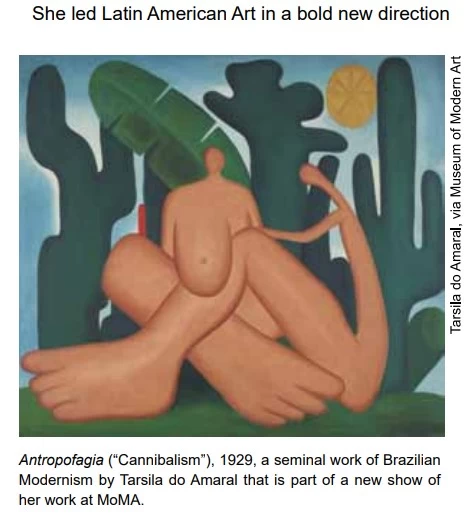
In 1928, Tarsila do Amaral painted Abaporu, a landmark work of Brazilian Modernism, in which a nude figure, half-human and half-animal, looks down at his massive, swollen foot, several times the size of his head. Abaporu inspired Tarsila’s husband at the time, the poet Oswald de Andrade, to write his celebrated “Cannibal Manifesto,” which flayed Brazil’s belletrist writers and called for an embrace of local influences – in fact, for a devouring of them. The European stereotype of native Brazilians as cannibals would be reformatted as a cultural virtue. More than a social and literary reform movement, cannibalism would form the basis for a new Brazilian nationalism, in which, as de Andrade wrote, “we made Christ to be born in Bahia.”
The unconventional nudes of A Negra, a painting produced in 1923, and Abaporu unite in Tarsila’s final great painting, Antropofagia, a marriage of two figures that is also a marriage of Old World and New. The couple sit entangled, her breast drooping over his knee, their giant feet crossed one over the other, while, behind them, a banana leaf grows as large as a cactus. The sun, high above the primordial couple, is a wedge of lemon.
A obra Antropofagia (“Cannibalism”) de Tarsila do Amaral - UNESP 2019
Inglês - 2019Leia o trecho do artigo de Jason Farago, publicado pelo jornal The New York Times, para responder às questões 21 e 22.

In 1928, Tarsila do Amaral painted Abaporu, a landmark work of Brazilian Modernism, in which a nude figure, half-human and half-animal, looks down at his massive, swollen foot, several times the size of his head. Abaporu inspired Tarsila’s husband at the time, the poet Oswald de Andrade, to write his celebrated “Cannibal Manifesto,” which flayed Brazil’s belletrist writers and called for an embrace of local influences – in fact, for a devouring of them. The European stereotype of native Brazilians as cannibals would be reformatted as a cultural virtue. More than a social and literary reform movement, cannibalism would form the basis for a new Brazilian nationalism, in which, as de Andrade wrote, “we made Christ to be born in Bahia.”
The unconventional nudes of A Negra, a painting produced in 1923, and Abaporu unite in Tarsila’s final great painting, Antropofagia, a marriage of two figures that is also a marriage of Old World and New. The couple sit entangled, her breast drooping over his knee, their giant feet crossed one over the other, while, behind them, a banana leaf grows as large as a cactus. The sun, high above the primordial couple, is a wedge of lemon.
Based on the information presented by the map, one can - UNESP 2019
Inglês - 2019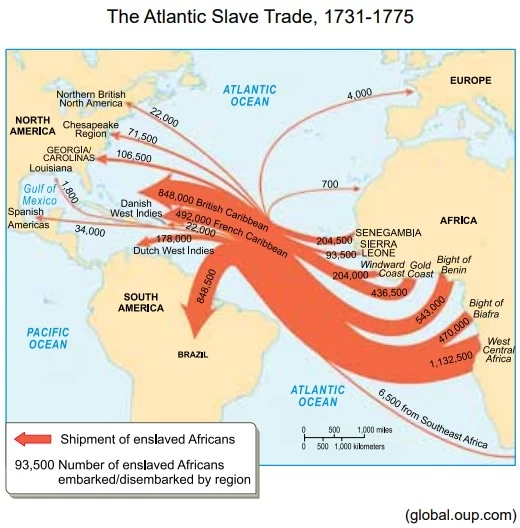
De acordo com o primeiro parágrafo, a) há perspectivas de - UNESP 2019
Inglês - 2019Leia o texto para responder às questões de 24 a 30.
Prescriptions for fighting epidemics

Epidemics have plagued humanity since the dawn of settled life. Yet, success in conquering them remains patchy. Experts predict that a global one that could kill more than 300 million people would come round in the next 20 to 40 years. What pathogen would cause it is anybody’s guess. Chances are that it will be a virus that lurks in birds or mammals, or one that that has not yet hatched. The scariest are both highly lethal and spread easily among humans. Thankfully, bugs that excel at the first tend to be weak at the other. But mutations – ordinary business for germs – can change that in a blink. Moreover, when humans get too close to beasts, either wild or packed in farms, an animal disease can become a human one.
A front-runner for global pandemics is the seasonal influenza virus, which mutates so much that a vaccine must be custom-made every year. The Spanish flu pandemic of 1918, which killed 50 million to 100 million people, was a potent version of the “swine flu” that emerged in 2009. The H5N1 “avian flu” strain, deadly in 60% of cases, came about in the 1990s when a virus that sickened birds made the jump to a human. Ebola, HIV and Zika took a similar route.
No trecho do primeiro parágrafo “or one that that has not - UNESP 2019
Inglês - 2019Leia o texto para responder às questões de 24 a 30.
Prescriptions for fighting epidemics

Epidemics have plagued humanity since the dawn of settled life. Yet, success in conquering them remains patchy. Experts predict that a global one that could kill more than 300 million people would come round in the next 20 to 40 years. What pathogen would cause it is anybody’s guess. Chances are that it will be a virus that lurks in birds or mammals, or one that that has not yet hatched. The scariest are both highly lethal and spread easily among humans. Thankfully, bugs that excel at the first tend to be weak at the other. But mutations – ordinary business for germs – can change that in a blink. Moreover, when humans get too close to beasts, either wild or packed in farms, an animal disease can become a human one.
A front-runner for global pandemics is the seasonal influenza virus, which mutates so much that a vaccine must be custom-made every year. The Spanish flu pandemic of 1918, which killed 50 million to 100 million people, was a potent version of the “swine flu” that emerged in 2009. The H5N1 “avian flu” strain, deadly in 60% of cases, came about in the 1990s when a virus that sickened birds made the jump to a human. Ebola, HIV and Zika took a similar route.
De acordo com o texto, os especialistas a) pressupõem que - UNESP 2019
Inglês - 2019Leia o texto para responder às questões de 24 a 30.
Prescriptions for fighting epidemics

Epidemics have plagued humanity since the dawn of settled life. Yet, success in conquering them remains patchy. Experts predict that a global one that could kill more than 300 million people would come round in the next 20 to 40 years. What pathogen would cause it is anybody’s guess. Chances are that it will be a virus that lurks in birds or mammals, or one that that has not yet hatched. The scariest are both highly lethal and spread easily among humans. Thankfully, bugs that excel at the first tend to be weak at the other. But mutations – ordinary business for germs – can change that in a blink. Moreover, when humans get too close to beasts, either wild or packed in farms, an animal disease can become a human one.
A front-runner for global pandemics is the seasonal influenza virus, which mutates so much that a vaccine must be custom-made every year. The Spanish flu pandemic of 1918, which killed 50 million to 100 million people, was a potent version of the “swine flu” that emerged in 2009. The H5N1 “avian flu” strain, deadly in 60% of cases, came about in the 1990s when a virus that sickened birds made the jump to a human. Ebola, HIV and Zika took a similar route.
No trecho do primeiro parágrafo “Yet, success in - UNESP 2019
Inglês - 2019Leia o texto para responder às questões de 24 a 30.
Prescriptions for fighting epidemics

Epidemics have plagued humanity since the dawn of settled life. Yet, success in conquering them remains patchy. Experts predict that a global one that could kill more than 300 million people would come round in the next 20 to 40 years. What pathogen would cause it is anybody’s guess. Chances are that it will be a virus that lurks in birds or mammals, or one that that has not yet hatched. The scariest are both highly lethal and spread easily among humans. Thankfully, bugs that excel at the first tend to be weak at the other. But mutations – ordinary business for germs – can change that in a blink. Moreover, when humans get too close to beasts, either wild or packed in farms, an animal disease can become a human one.
A front-runner for global pandemics is the seasonal influenza virus, which mutates so much that a vaccine must be custom-made every year. The Spanish flu pandemic of 1918, which killed 50 million to 100 million people, was a potent version of the “swine flu” that emerged in 2009. The H5N1 “avian flu” strain, deadly in 60% of cases, came about in the 1990s when a virus that sickened birds made the jump to a human. Ebola, HIV and Zika took a similar route.
No trecho do primeiro parágrafo “can change that in a - UNESP 2019
Inglês - 2019Leia o texto para responder às questões de 24 a 30.
Prescriptions for fighting epidemics

Epidemics have plagued humanity since the dawn of settled life. Yet, success in conquering them remains patchy. Experts predict that a global one that could kill more than 300 million people would come round in the next 20 to 40 years. What pathogen would cause it is anybody’s guess. Chances are that it will be a virus that lurks in birds or mammals, or one that that has not yet hatched. The scariest are both highly lethal and spread easily among humans. Thankfully, bugs that excel at the first tend to be weak at the other. But mutations – ordinary business for germs – can change that in a blink. Moreover, when humans get too close to beasts, either wild or packed in farms, an animal disease can become a human one.
A front-runner for global pandemics is the seasonal influenza virus, which mutates so much that a vaccine must be custom-made every year. The Spanish flu pandemic of 1918, which killed 50 million to 100 million people, was a potent version of the “swine flu” that emerged in 2009. The H5N1 “avian flu” strain, deadly in 60% of cases, came about in the 1990s when a virus that sickened birds made the jump to a human. Ebola, HIV and Zika took a similar route.
No trecho do primeiro parágrafo “Moreover, when humans - UNESP 2019
Inglês - 2019Leia o texto para responder às questões de 24 a 30.
Prescriptions for fighting epidemics

Epidemics have plagued humanity since the dawn of settled life. Yet, success in conquering them remains patchy. Experts predict that a global one that could kill more than 300 million people would come round in the next 20 to 40 years. What pathogen would cause it is anybody’s guess. Chances are that it will be a virus that lurks in birds or mammals, or one that that has not yet hatched. The scariest are both highly lethal and spread easily among humans. Thankfully, bugs that excel at the first tend to be weak at the other. But mutations – ordinary business for germs – can change that in a blink. Moreover, when humans get too close to beasts, either wild or packed in farms, an animal disease can become a human one.
A front-runner for global pandemics is the seasonal influenza virus, which mutates so much that a vaccine must be custom-made every year. The Spanish flu pandemic of 1918, which killed 50 million to 100 million people, was a potent version of the “swine flu” that emerged in 2009. The H5N1 “avian flu” strain, deadly in 60% of cases, came about in the 1990s when a virus that sickened birds made the jump to a human. Ebola, HIV and Zika took a similar route.
De acordo com o segundo parágrafo, a) o vírus H5N1 é uma - UNESP 2019
Inglês - 2019Leia o texto para responder às questões de 24 a 30.
Prescriptions for fighting epidemics

Epidemics have plagued humanity since the dawn of settled life. Yet, success in conquering them remains patchy. Experts predict that a global one that could kill more than 300 million people would come round in the next 20 to 40 years. What pathogen would cause it is anybody’s guess. Chances are that it will be a virus that lurks in birds or mammals, or one that that has not yet hatched. The scariest are both highly lethal and spread easily among humans. Thankfully, bugs that excel at the first tend to be weak at the other. But mutations – ordinary business for germs – can change that in a blink. Moreover, when humans get too close to beasts, either wild or packed in farms, an animal disease can become a human one.
A front-runner for global pandemics is the seasonal influenza virus, which mutates so much that a vaccine must be custom-made every year. The Spanish flu pandemic of 1918, which killed 50 million to 100 million people, was a potent version of the “swine flu” that emerged in 2009. The H5N1 “avian flu” strain, deadly in 60% of cases, came about in the 1990s when a virus that sickened birds made the jump to a human. Ebola, HIV and Zika took a similar route.
Na frase, The World Economic Forum reports that you need - FATEC 2019
Inglês - 2019The Skills You Need To Succeed In 2020
By Avil Beckford - Aug 6, 2018.
The World Economic Forum reports that you need ten skills to thrive in 2020: complex problem solving; critical thinking; creativity; people management; coordinating with others; emotional intelligence; judgement and decision making; service orientation: negotiation; cognitive flexibility.
The ten skills on this list make sense for the age that we are living in. Of these, you want to focus on creative work, because that is where you are likely to remain employable. Every professional can be creative in the work she does.
You might have started to realize that you will need more than the ten skills listed earlier. Alvin Toffler once said, "The illiterate of the 21st century will not be those who cannot read and write, but those who cannot learn, unlearn, and relearn."
In some instances, relearning could be adapting what you know to a new reality. Take cell phones as an example. When they first came out, they were used solely as communications devices. Convergence happened, and now our smartphones are minicomputers. People had to relearn how to use a phone.
In terms of work, you will have to adapt some of your skills to the jobs of the future, and you will also have to learn new skills. Here are some of the additional skills that you will need to succeed in 2020.
Learning how to learn. Since skills are constantly changing, you have to learn how to learn.
Analyzing information. When you take good and detailed notes, you can review them to pick out the big ideas, understand, and make sense of information.
Spotting patterns and trends. I recommend that you combine ideas from the different books that you read. By doing this, you may be able to spot ideas and trends.
Communicating - written and oral. You can combine ideas that once seemed unrelated to communicate them to influencers, who can help you to shape and implement them.
Understanding and leveraging technology. Technology is changing at an unprecedented pace, so you need to understand and keep on top of it.
De acordo com o texto, dentre as dez habilidades - FATEC 2019
Inglês - 2019The Skills You Need To Succeed In 2020
By Avil Beckford - Aug 6, 2018.
The World Economic Forum reports that you need ten skills to thrive in 2020: complex problem solving; critical thinking; creativity; people management; coordinating with others; emotional intelligence; judgement and decision making; service orientation: negotiation; cognitive flexibility.
The ten skills on this list make sense for the age that we are living in. Of these, you want to focus on creative work, because that is where you are likely to remain employable. Every professional can be creative in the work she does.
You might have started to realize that you will need more than the ten skills listed earlier. Alvin Toffler once said, "The illiterate of the 21st century will not be those who cannot read and write, but those who cannot learn, unlearn, and relearn."
In some instances, relearning could be adapting what you know to a new reality. Take cell phones as an example. When they first came out, they were used solely as communications devices. Convergence happened, and now our smartphones are minicomputers. People had to relearn how to use a phone.
In terms of work, you will have to adapt some of your skills to the jobs of the future, and you will also have to learn new skills. Here are some of the additional skills that you will need to succeed in 2020.
Learning how to learn. Since skills are constantly changing, you have to learn how to learn.
Analyzing information. When you take good and detailed notes, you can review them to pick out the big ideas, understand, and make sense of information.
Spotting patterns and trends. I recommend that you combine ideas from the different books that you read. By doing this, you may be able to spot ideas and trends.
Communicating - written and oral. You can combine ideas that once seemed unrelated to communicate them to influencers, who can help you to shape and implement them.
Understanding and leveraging technology. Technology is changing at an unprecedented pace, so you need to understand and keep on top of it.
Na oração The illiterate of the 21st century will not be - FATEC 2019
Inglês - 2019The Skills You Need To Succeed In 2020
By Avil Beckford - Aug 6, 2018.
The World Economic Forum reports that you need ten skills to thrive in 2020: complex problem solving; critical thinking; creativity; people management; coordinating with others; emotional intelligence; judgement and decision making; service orientation: negotiation; cognitive flexibility.
The ten skills on this list make sense for the age that we are living in. Of these, you want to focus on creative work, because that is where you are likely to remain employable. Every professional can be creative in the work she does.
You might have started to realize that you will need more than the ten skills listed earlier. Alvin Toffler once said, "The illiterate of the 21st century will not be those who cannot read and write, but those who cannot learn, unlearn, and relearn."
In some instances, relearning could be adapting what you know to a new reality. Take cell phones as an example. When they first came out, they were used solely as communications devices. Convergence happened, and now our smartphones are minicomputers. People had to relearn how to use a phone.
In terms of work, you will have to adapt some of your skills to the jobs of the future, and you will also have to learn new skills. Here are some of the additional skills that you will need to succeed in 2020.
Learning how to learn. Since skills are constantly changing, you have to learn how to learn.
Analyzing information. When you take good and detailed notes, you can review them to pick out the big ideas, understand, and make sense of information.
Spotting patterns and trends. I recommend that you combine ideas from the different books that you read. By doing this, you may be able to spot ideas and trends.
Communicating - written and oral. You can combine ideas that once seemed unrelated to communicate them to influencers, who can help you to shape and implement them.
Understanding and leveraging technology. Technology is changing at an unprecedented pace, so you need to understand and keep on top of it.
Na oração In terms of work, you will have to adapt some - FATEC 2019
Inglês - 2019The Skills You Need To Succeed In 2020
By Avil Beckford - Aug 6, 2018.
The World Economic Forum reports that you need ten skills to thrive in 2020: complex problem solving; critical thinking; creativity; people management; coordinating with others; emotional intelligence; judgement and decision making; service orientation: negotiation; cognitive flexibility.
The ten skills on this list make sense for the age that we are living in. Of these, you want to focus on creative work, because that is where you are likely to remain employable. Every professional can be creative in the work she does.
You might have started to realize that you will need more than the ten skills listed earlier. Alvin Toffler once said, "The illiterate of the 21st century will not be those who cannot read and write, but those who cannot learn, unlearn, and relearn."
In some instances, relearning could be adapting what you know to a new reality. Take cell phones as an example. When they first came out, they were used solely as communications devices. Convergence happened, and now our smartphones are minicomputers. People had to relearn how to use a phone.
In terms of work, you will have to adapt some of your skills to the jobs of the future, and you will also have to learn new skills. Here are some of the additional skills that you will need to succeed in 2020.
Learning how to learn. Since skills are constantly changing, you have to learn how to learn.
Analyzing information. When you take good and detailed notes, you can review them to pick out the big ideas, understand, and make sense of information.
Spotting patterns and trends. I recommend that you combine ideas from the different books that you read. By doing this, you may be able to spot ideas and trends.
Communicating - written and oral. You can combine ideas that once seemed unrelated to communicate them to influencers, who can help you to shape and implement them.
Understanding and leveraging technology. Technology is changing at an unprecedented pace, so you need to understand and keep on top of it.
De acordo com o texto, algumas habilidades adicionais - FATEC 2019
Inglês - 2019The Skills You Need To Succeed In 2020
By Avil Beckford - Aug 6, 2018.
The World Economic Forum reports that you need ten skills to thrive in 2020: complex problem solving; critical thinking; creativity; people management; coordinating with others; emotional intelligence; judgement and decision making; service orientation: negotiation; cognitive flexibility.
The ten skills on this list make sense for the age that we are living in. Of these, you want to focus on creative work, because that is where you are likely to remain employable. Every professional can be creative in the work she does.
You might have started to realize that you will need more than the ten skills listed earlier. Alvin Toffler once said, "The illiterate of the 21st century will not be those who cannot read and write, but those who cannot learn, unlearn, and relearn."
In some instances, relearning could be adapting what you know to a new reality. Take cell phones as an example. When they first came out, they were used solely as communications devices. Convergence happened, and now our smartphones are minicomputers. People had to relearn how to use a phone.
In terms of work, you will have to adapt some of your skills to the jobs of the future, and you will also have to learn new skills. Here are some of the additional skills that you will need to succeed in 2020.
Learning how to learn. Since skills are constantly changing, you have to learn how to learn.
Analyzing information. When you take good and detailed notes, you can review them to pick out the big ideas, understand, and make sense of information.
Spotting patterns and trends. I recommend that you combine ideas from the different books that you read. By doing this, you may be able to spot ideas and trends.
Communicating - written and oral. You can combine ideas that once seemed unrelated to communicate them to influencers, who can help you to shape and implement them.
Understanding and leveraging technology. Technology is changing at an unprecedented pace, so you need to understand and keep on top of it.
Examine a tira de Steinberg, publicada em seu Instagram - UNIFESP 2019
Inglês - 2019Examine a tira de Steinberg, publicada em seu Instagram no dia 20.08.2018.
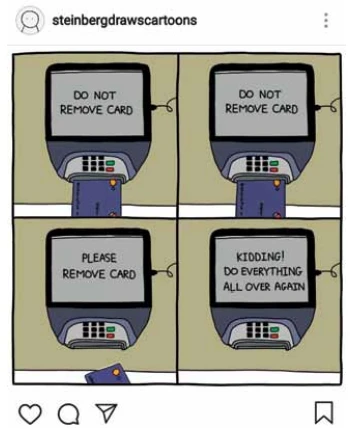
Apoie nosso trabalho!
Assine Agora